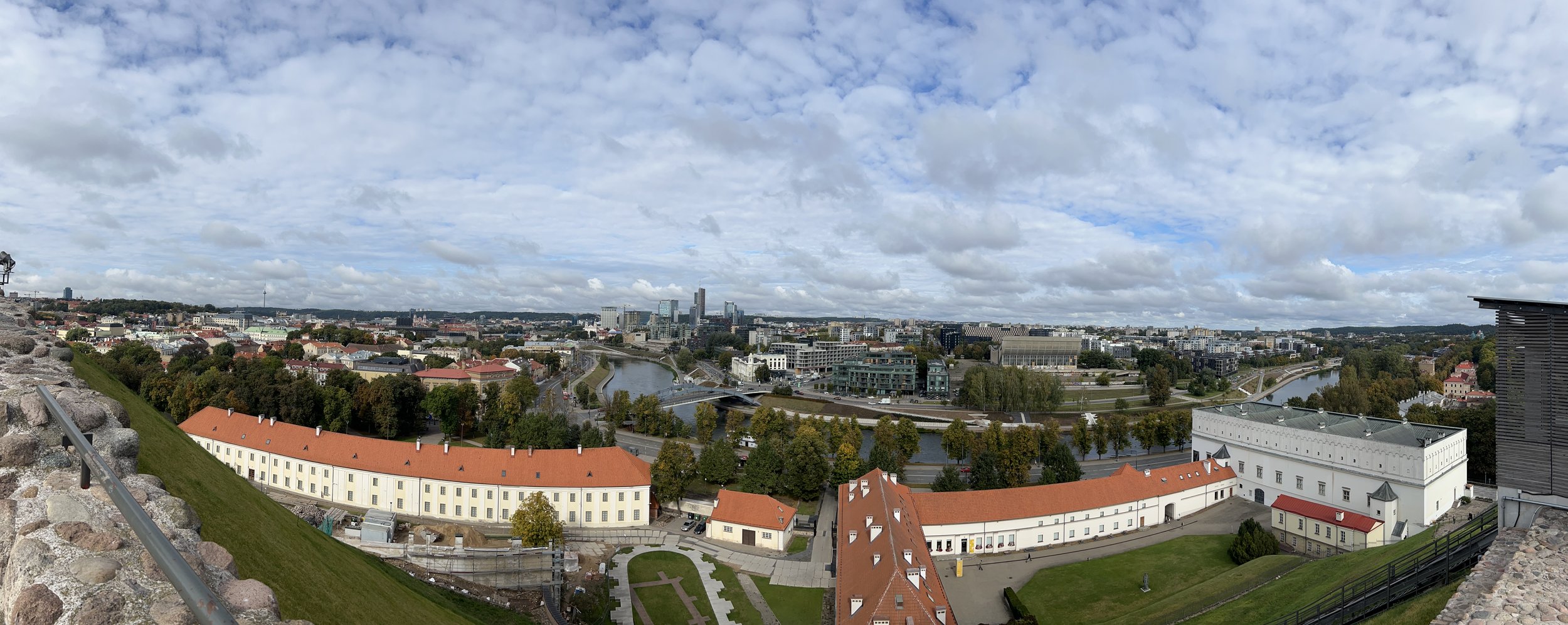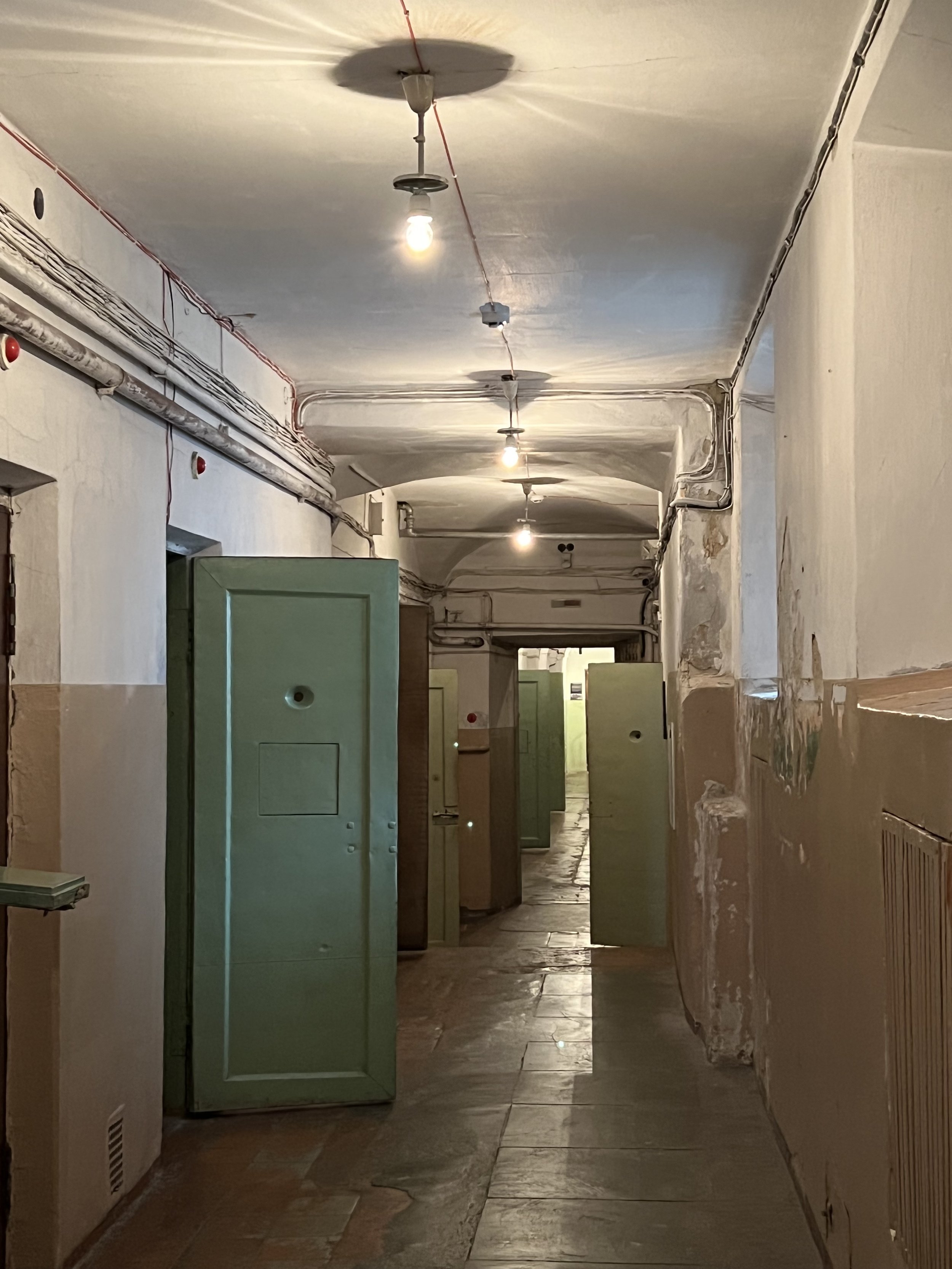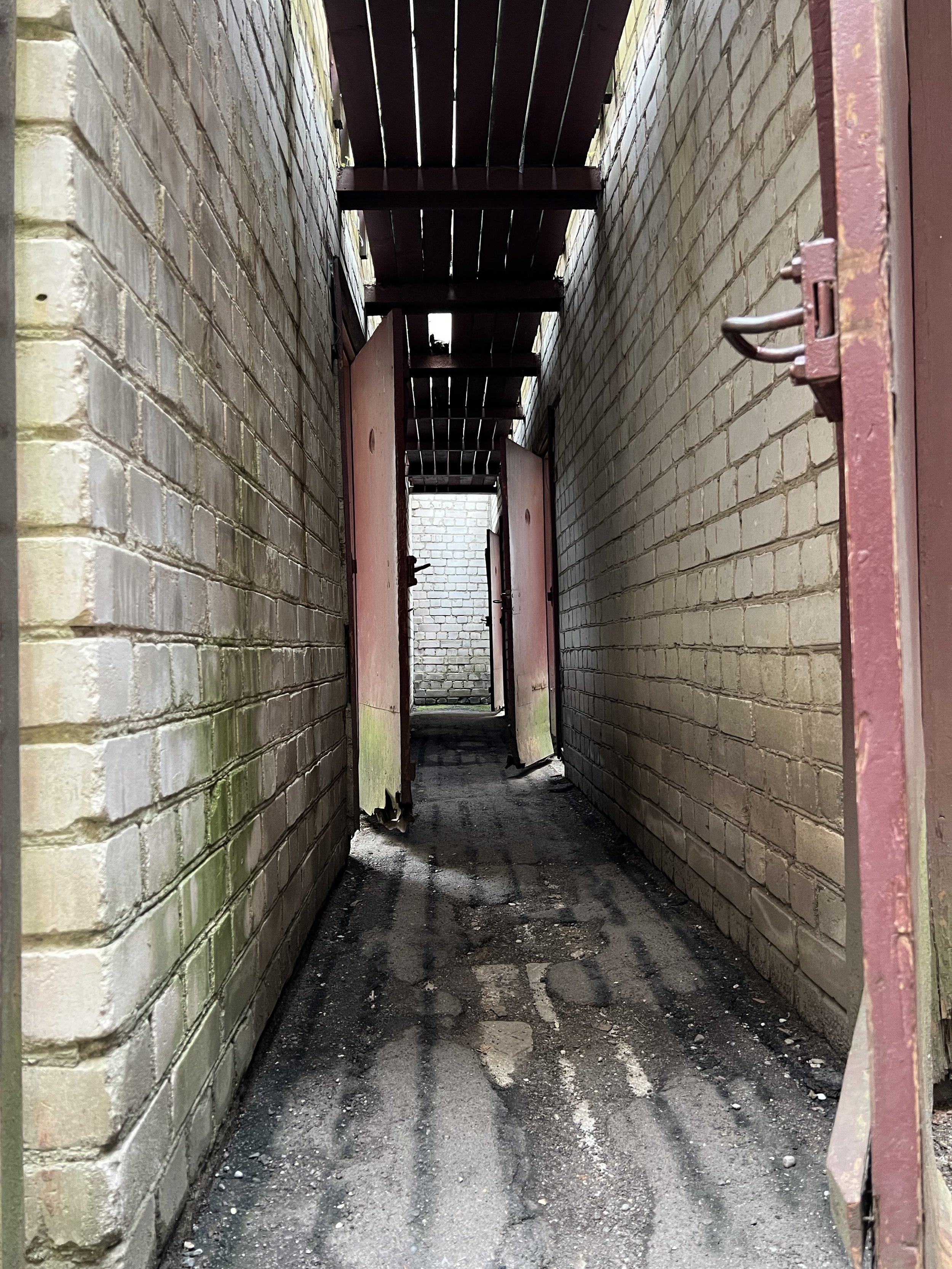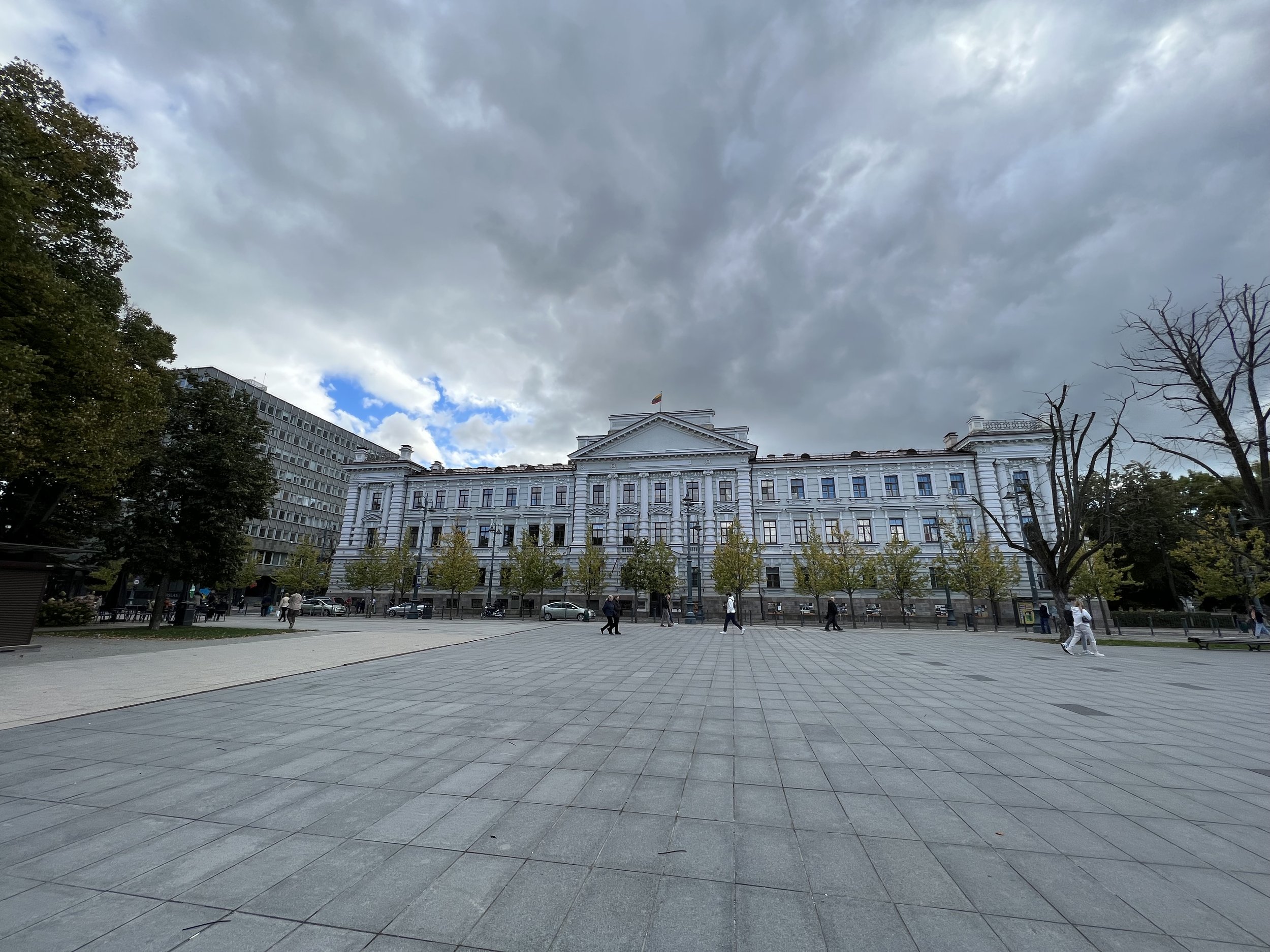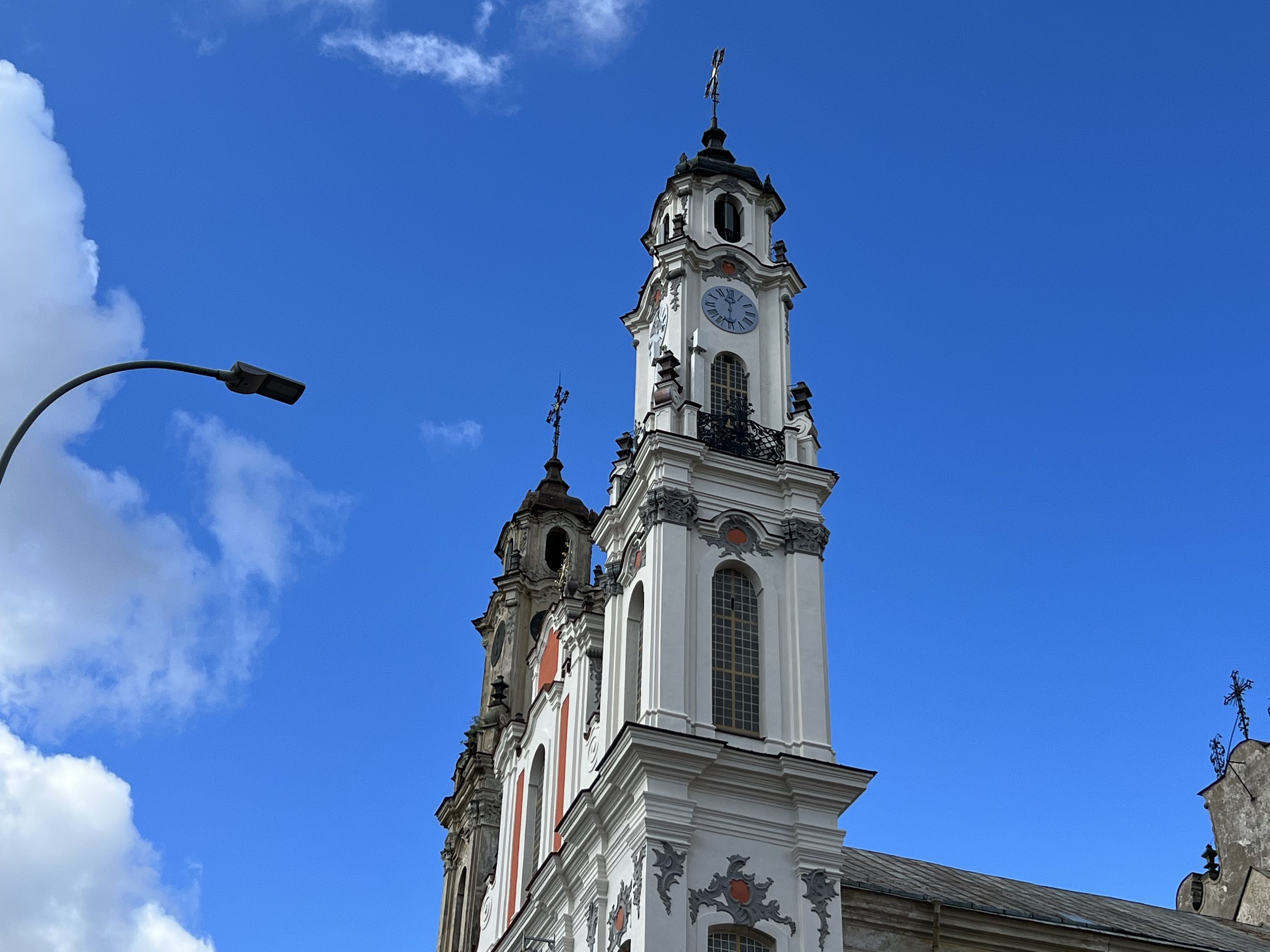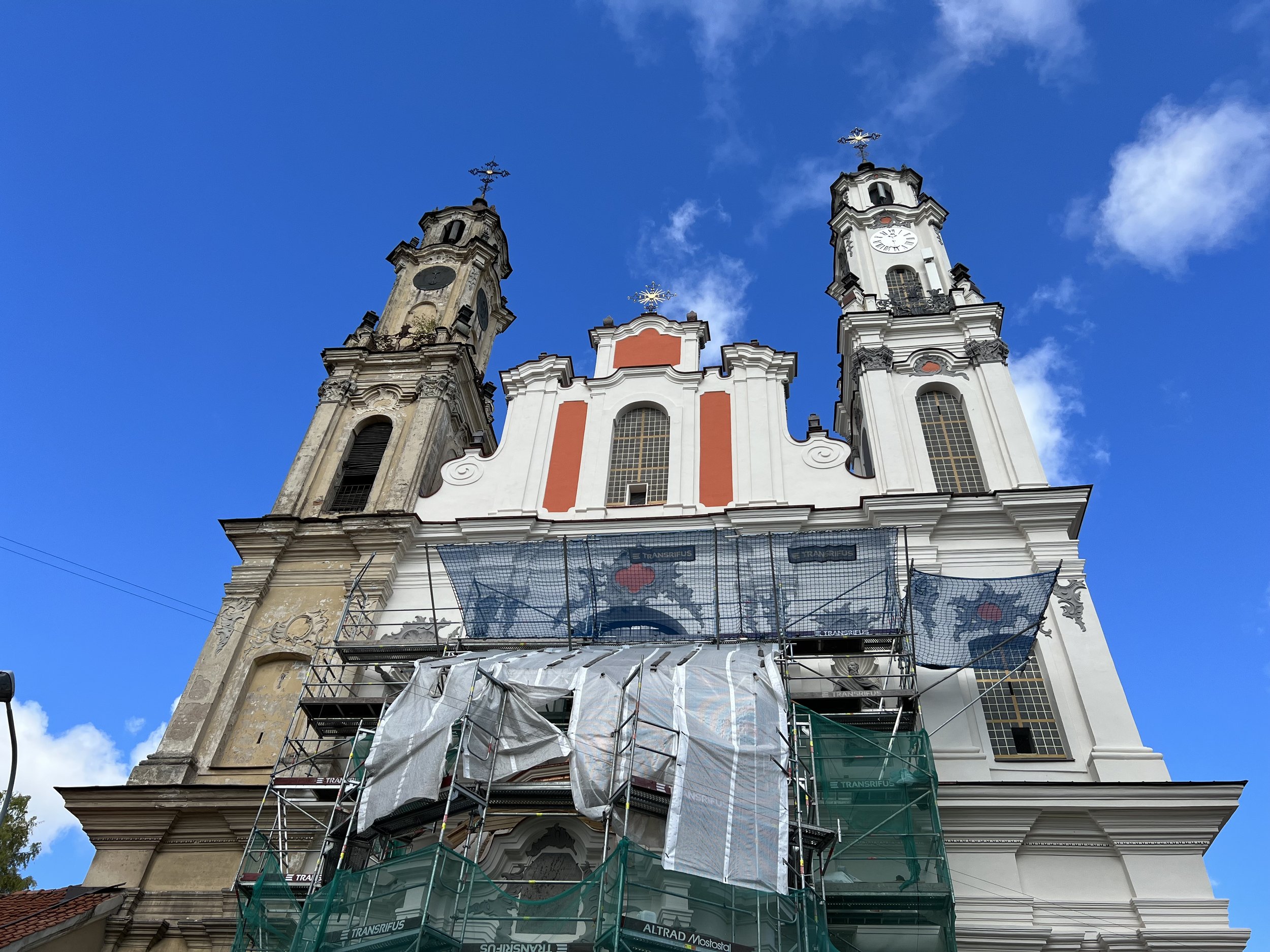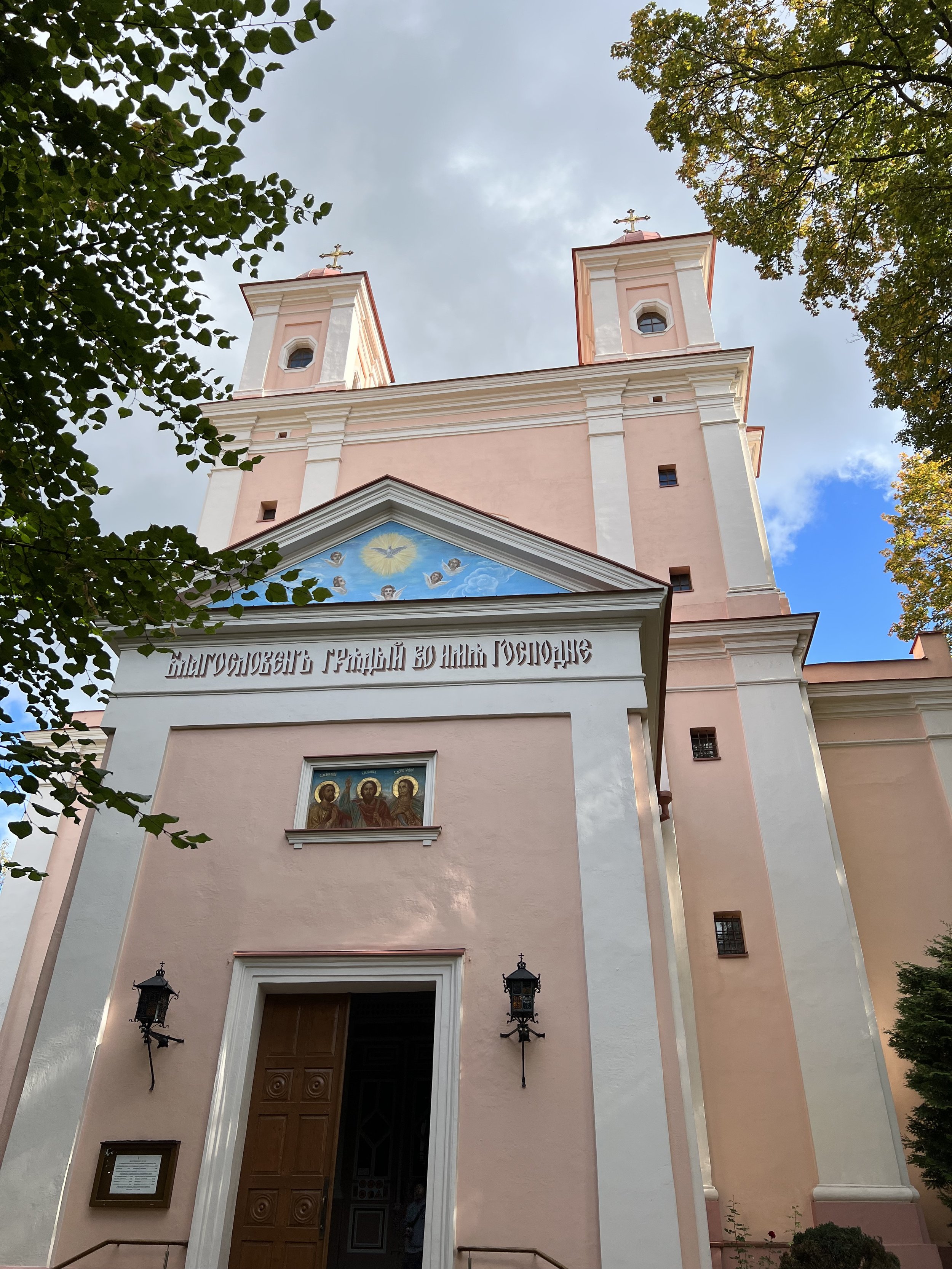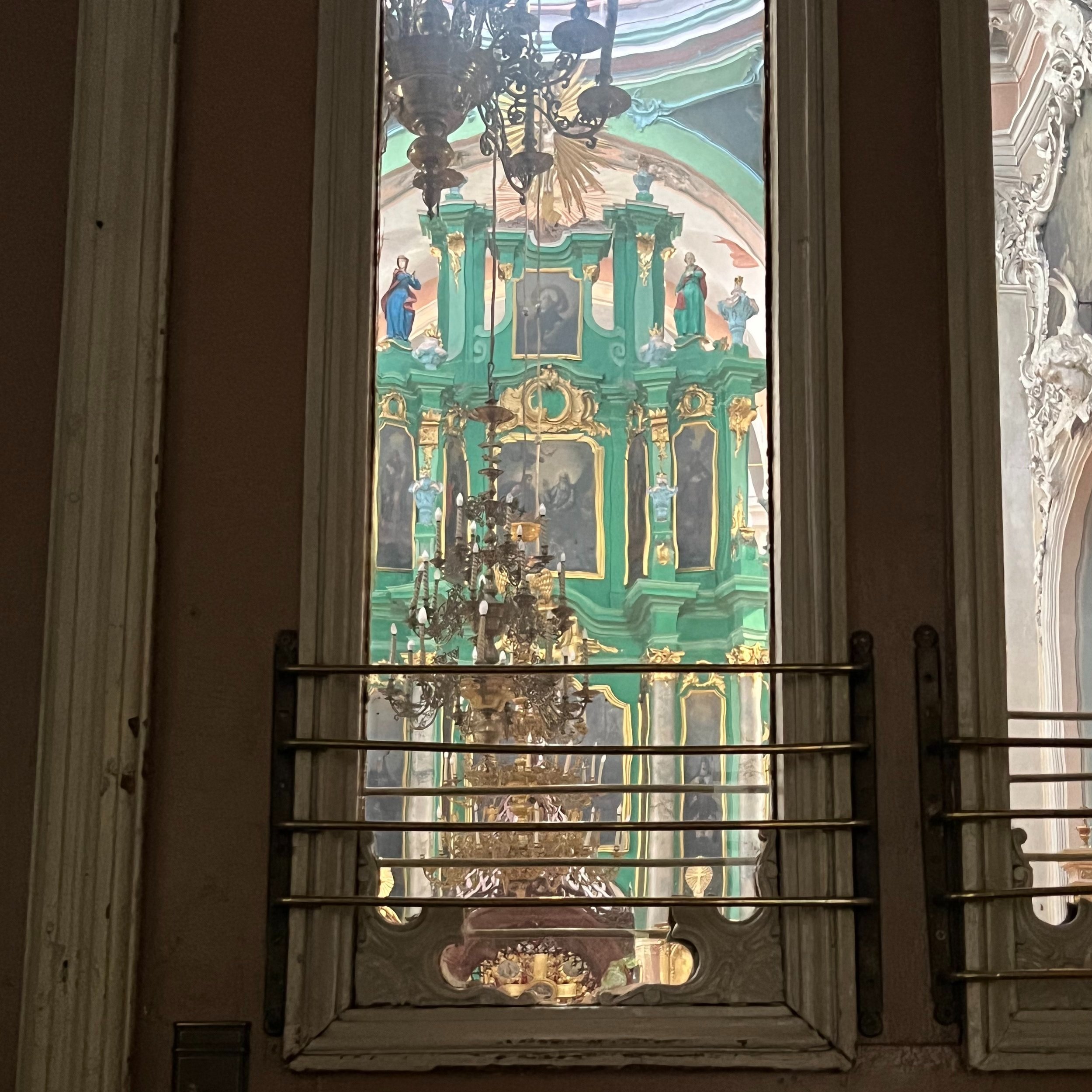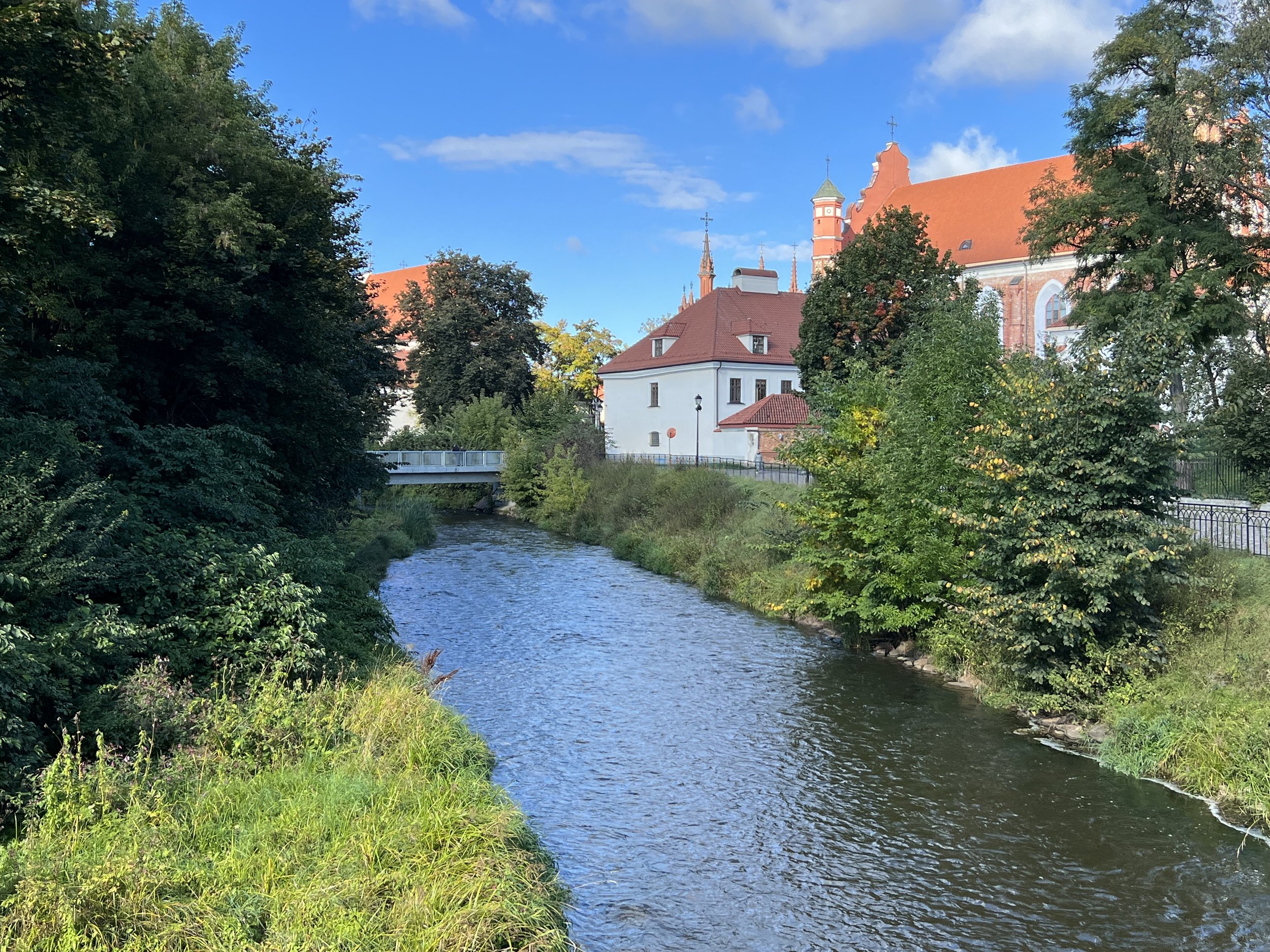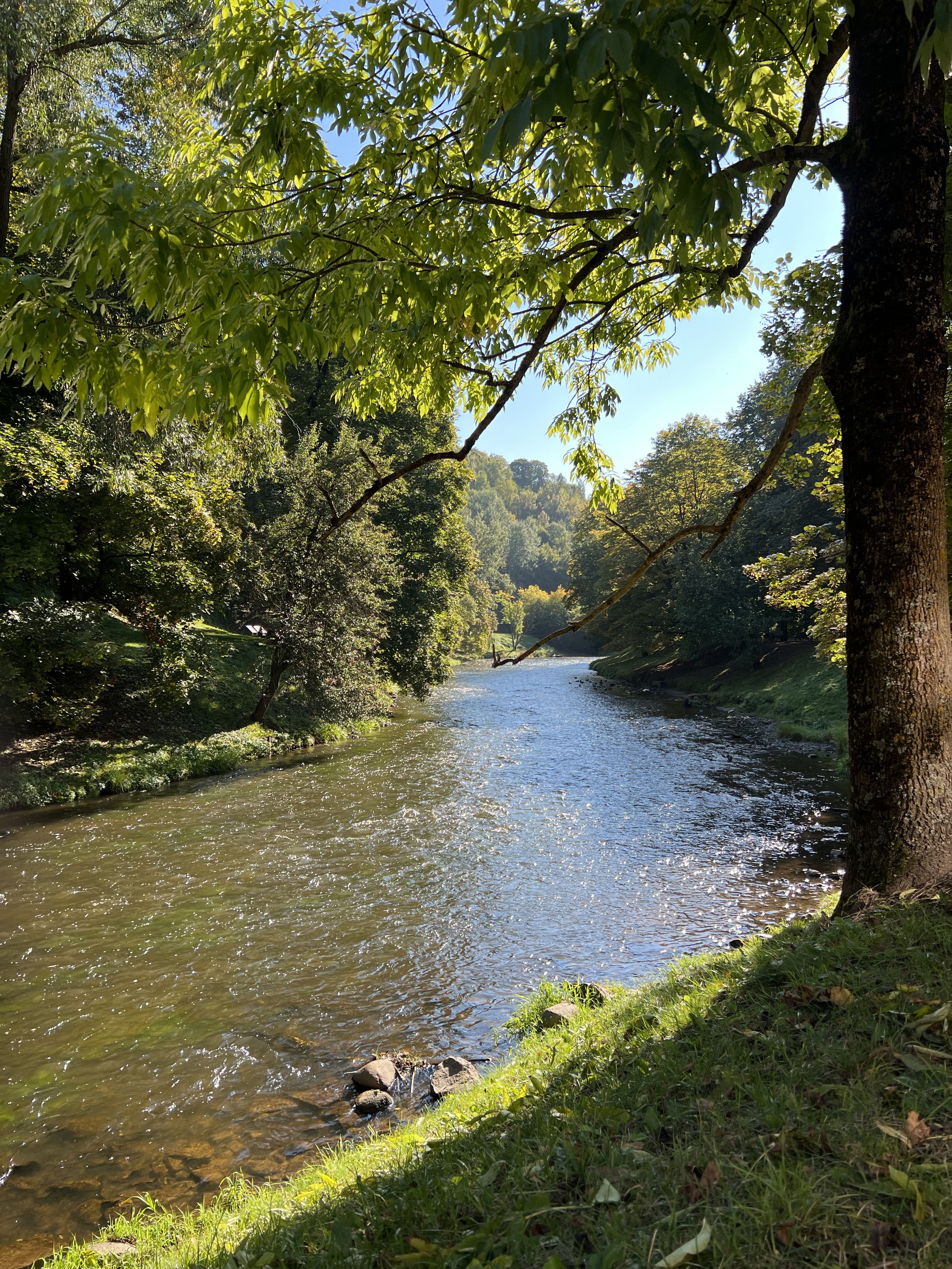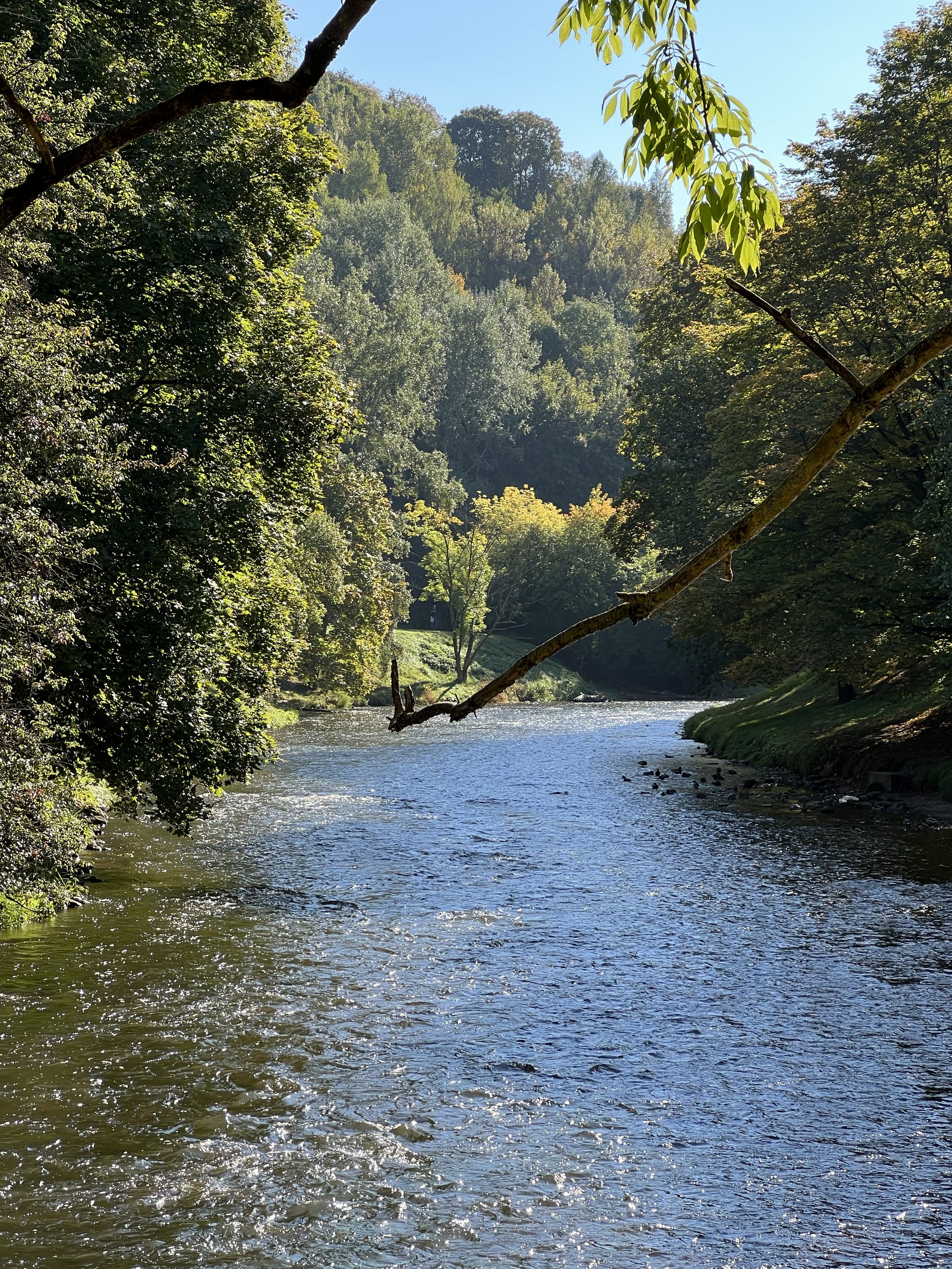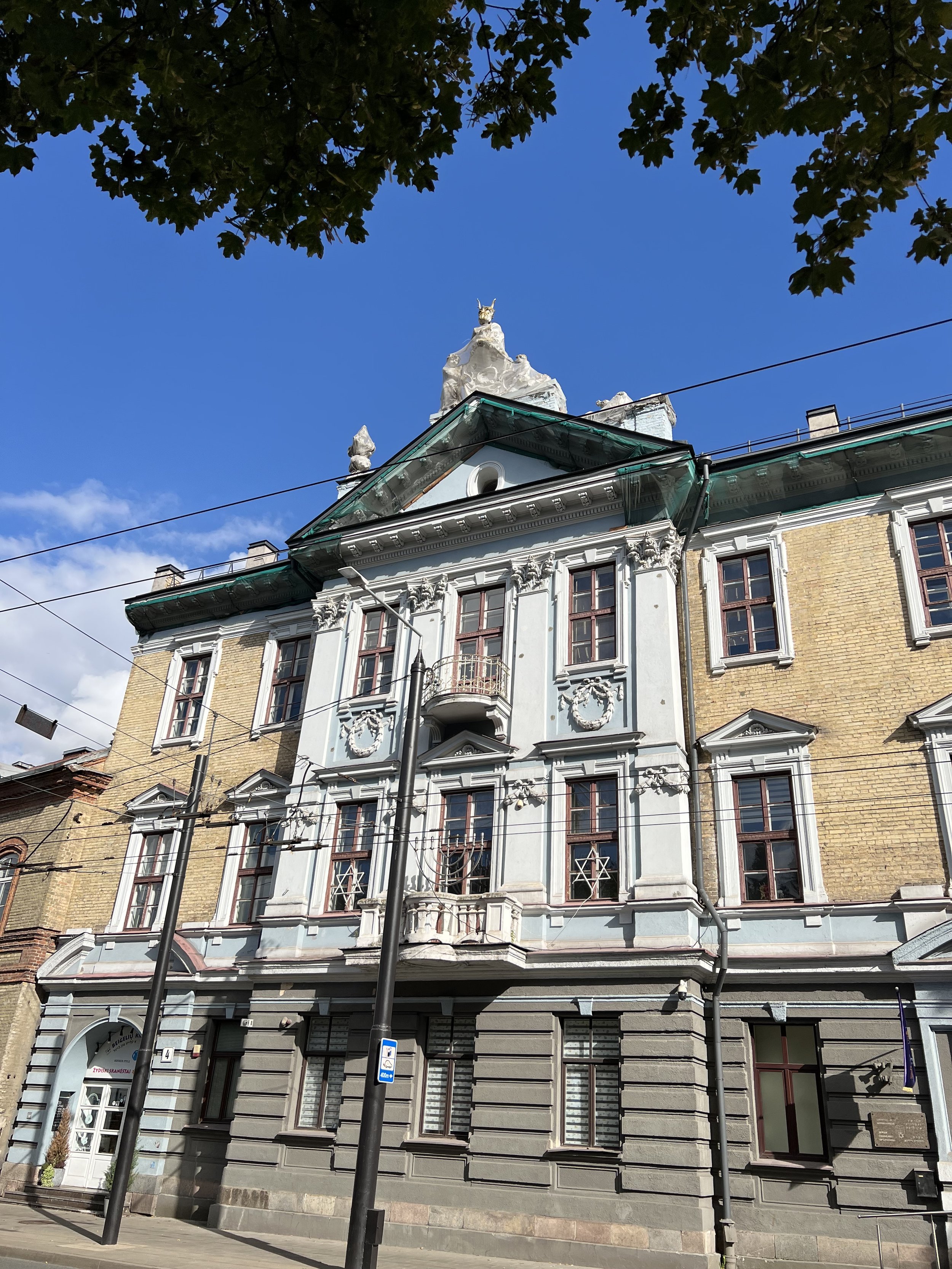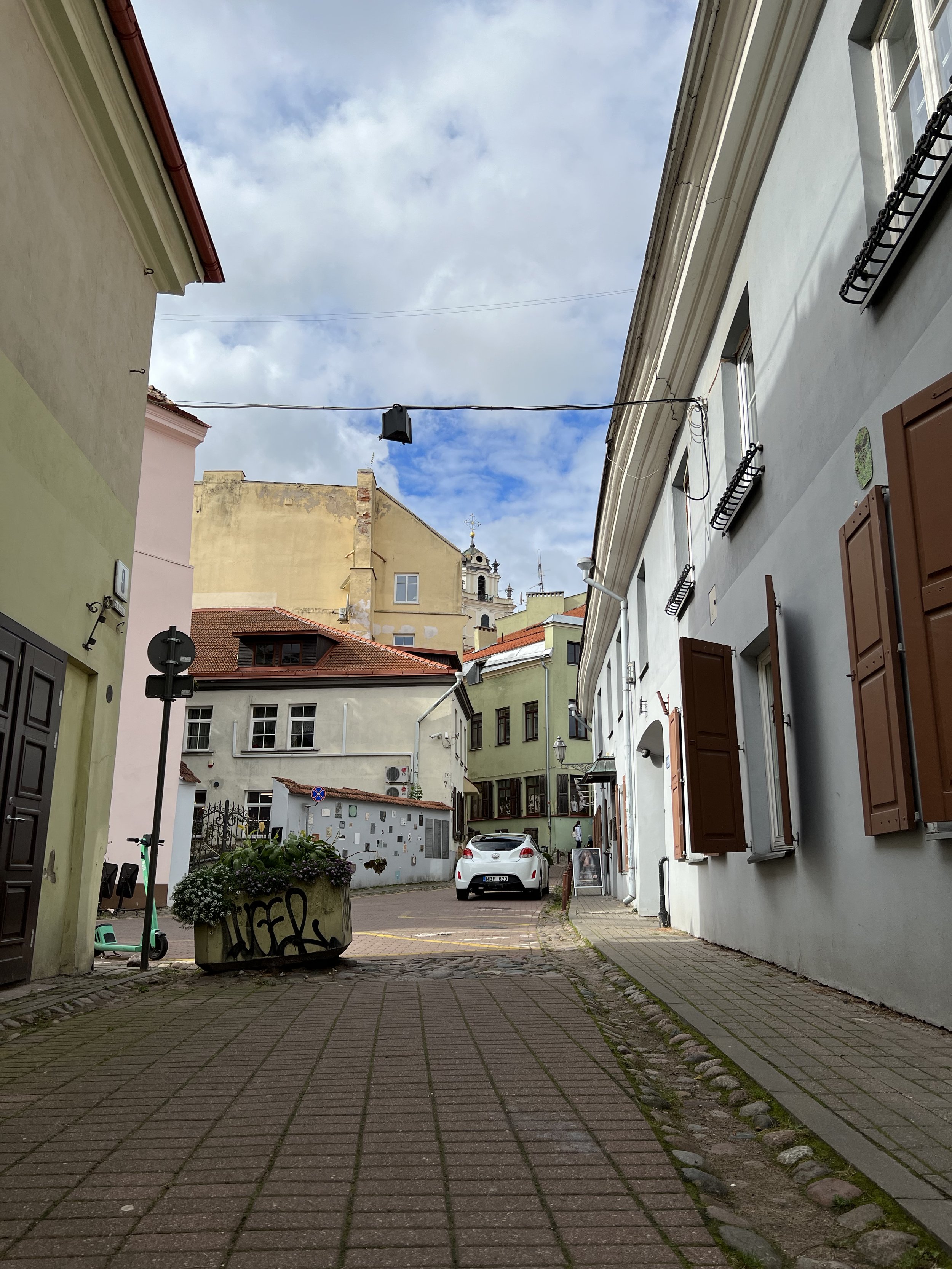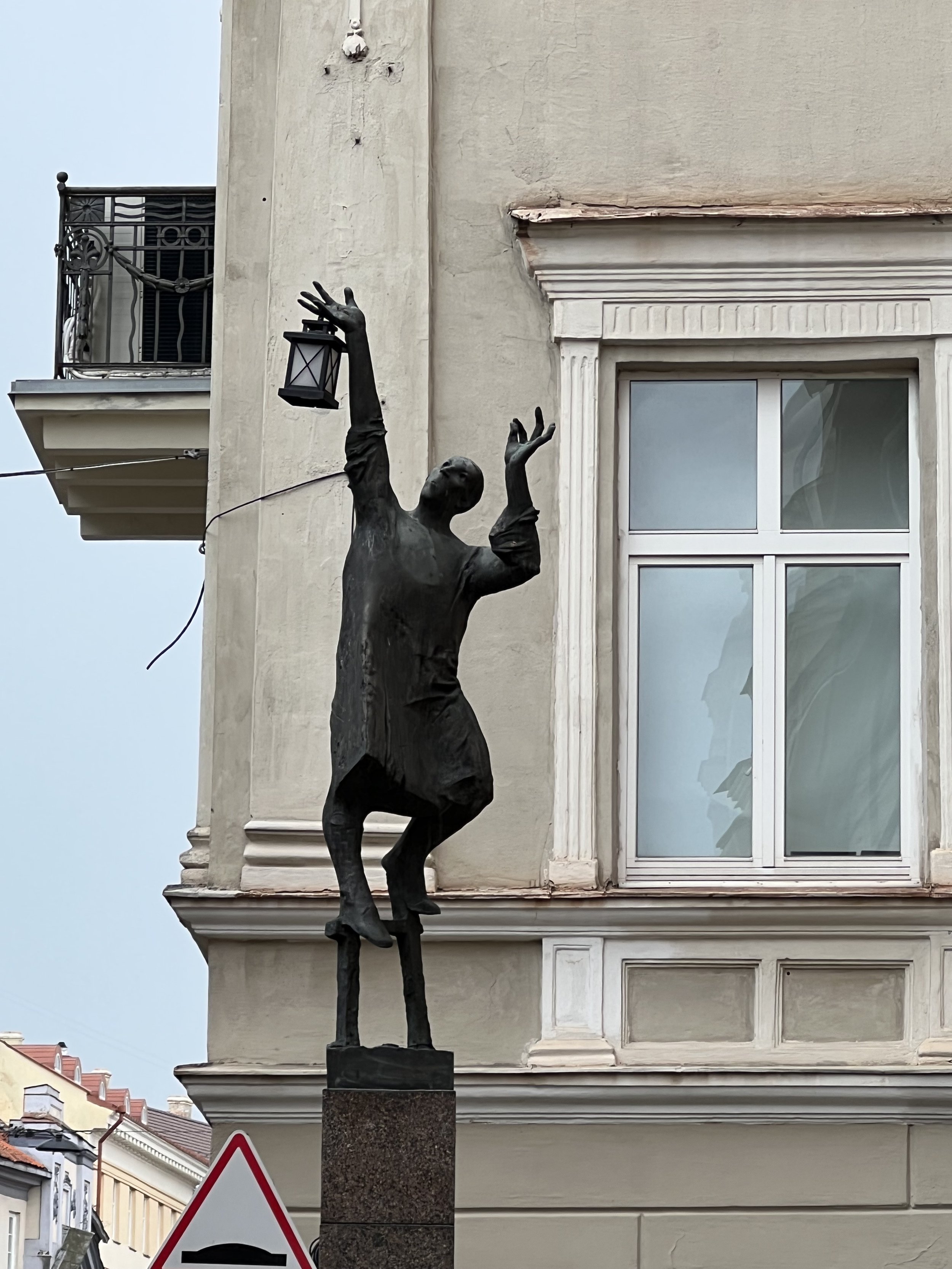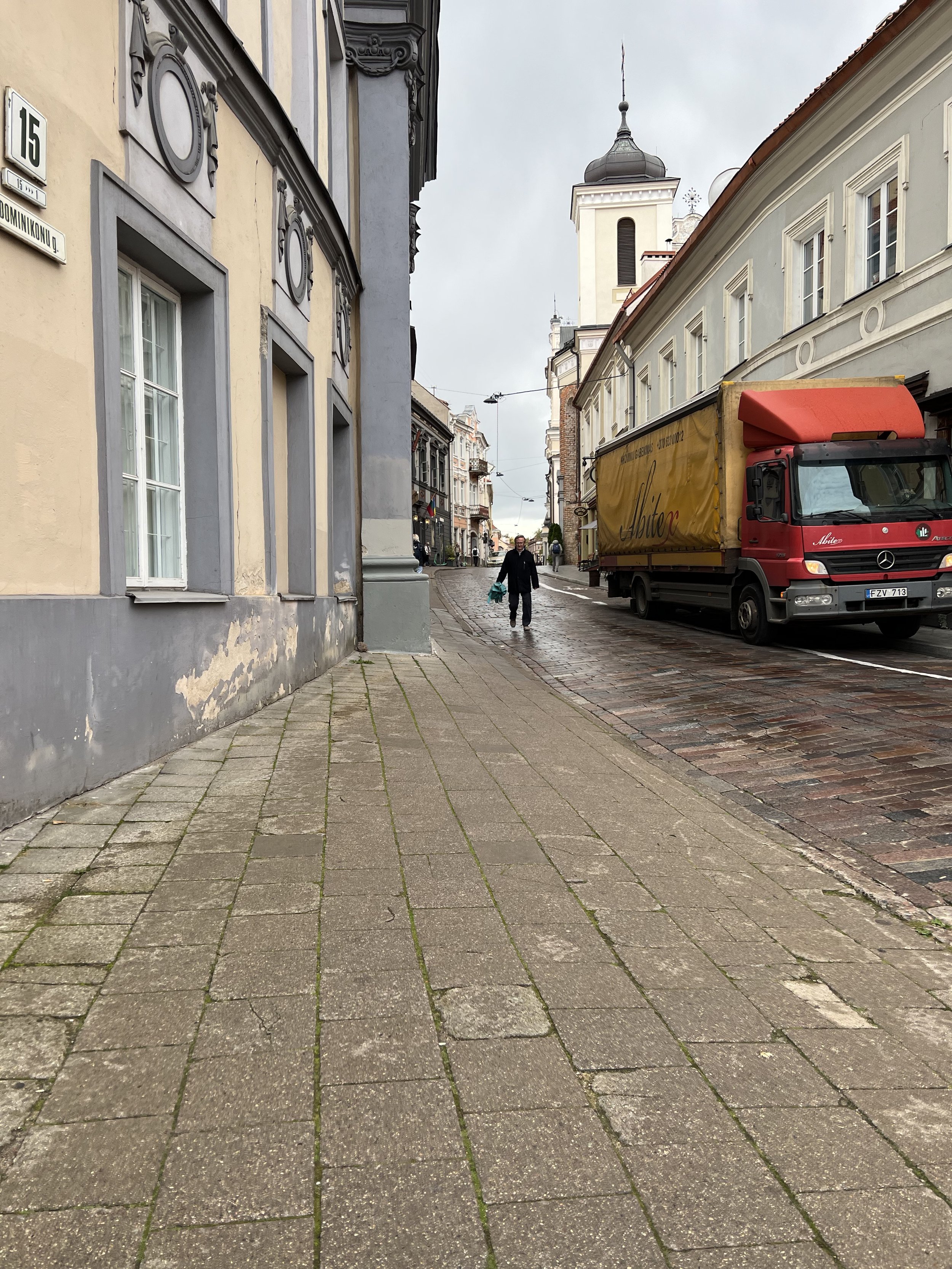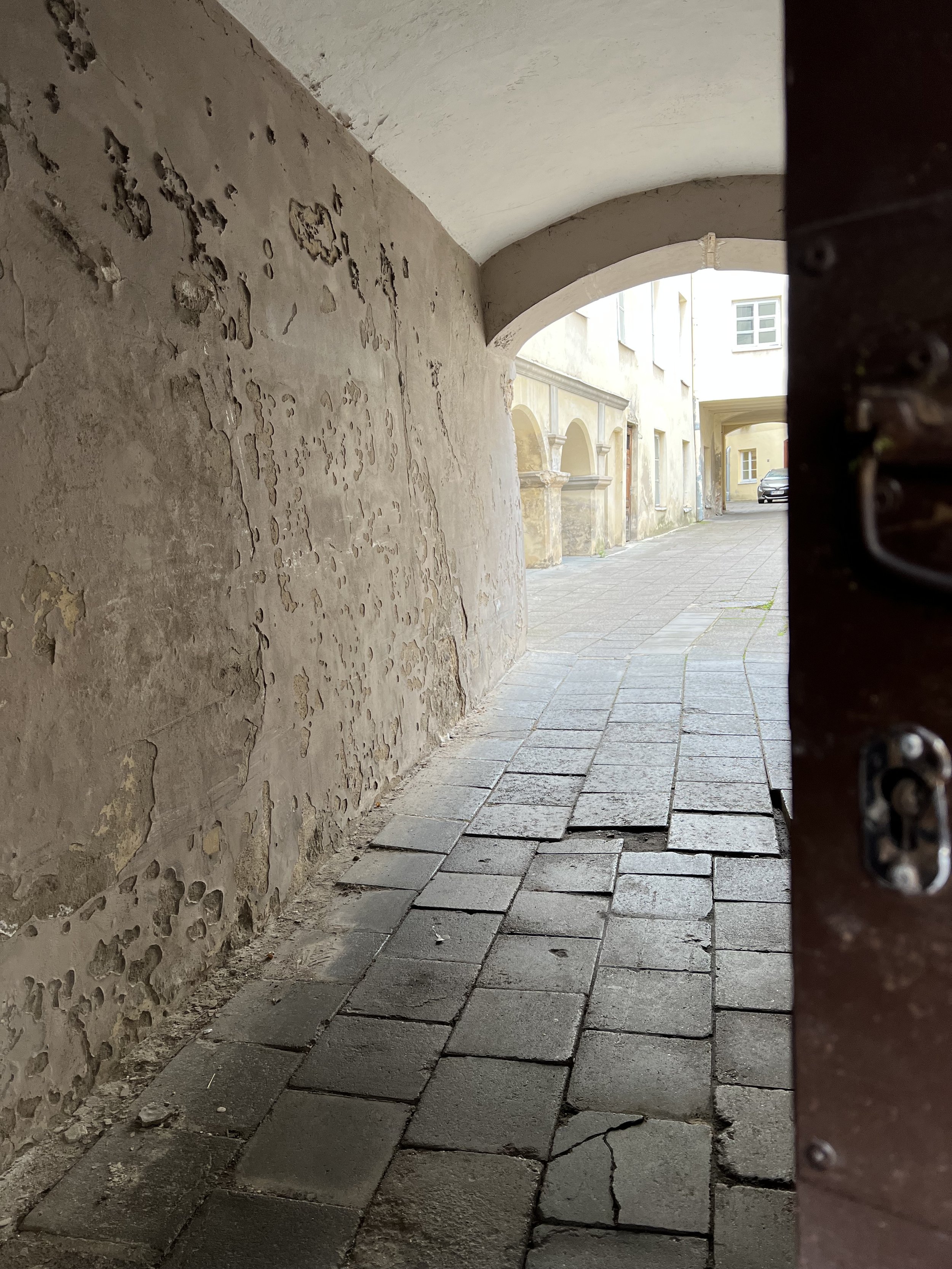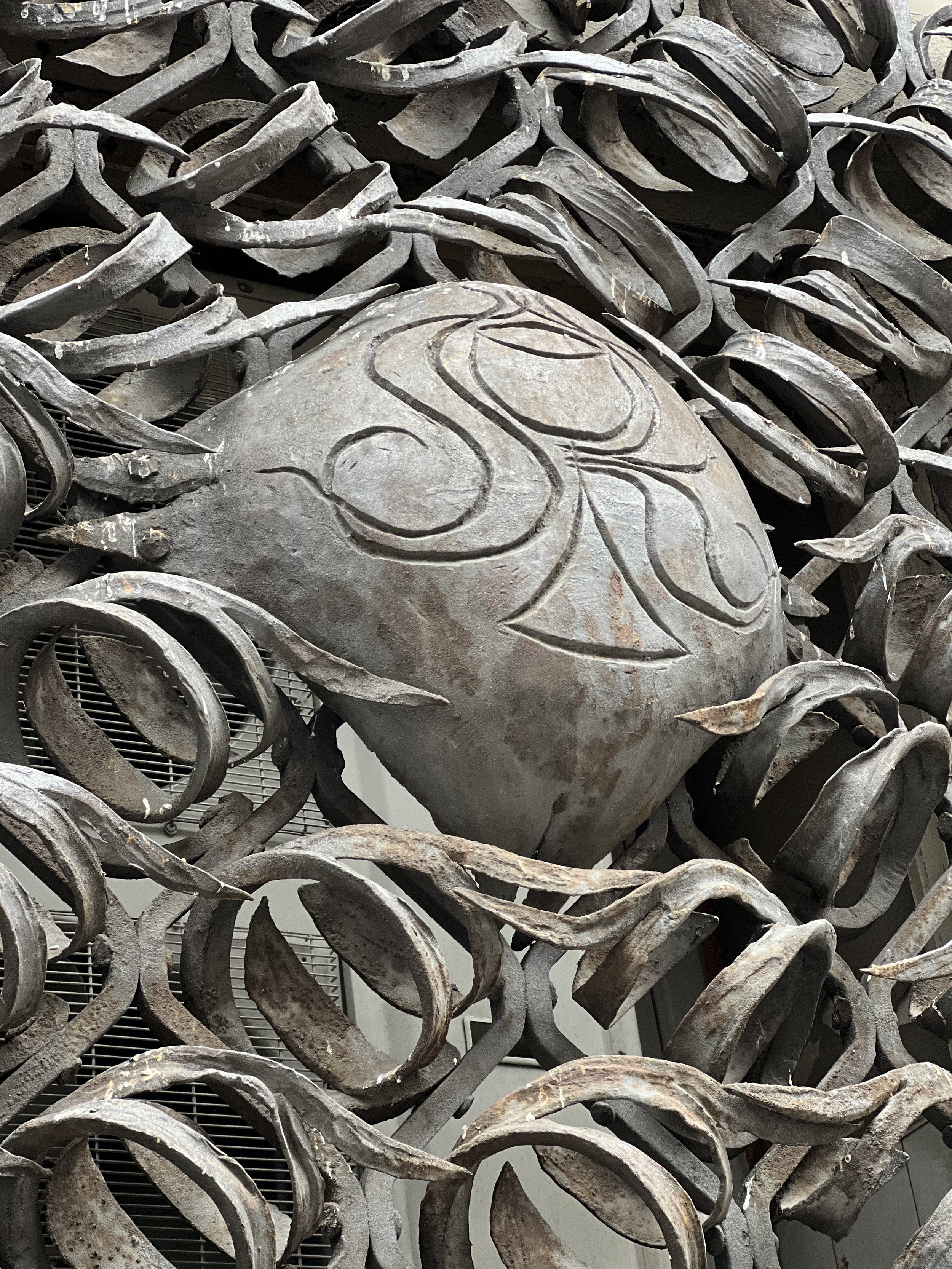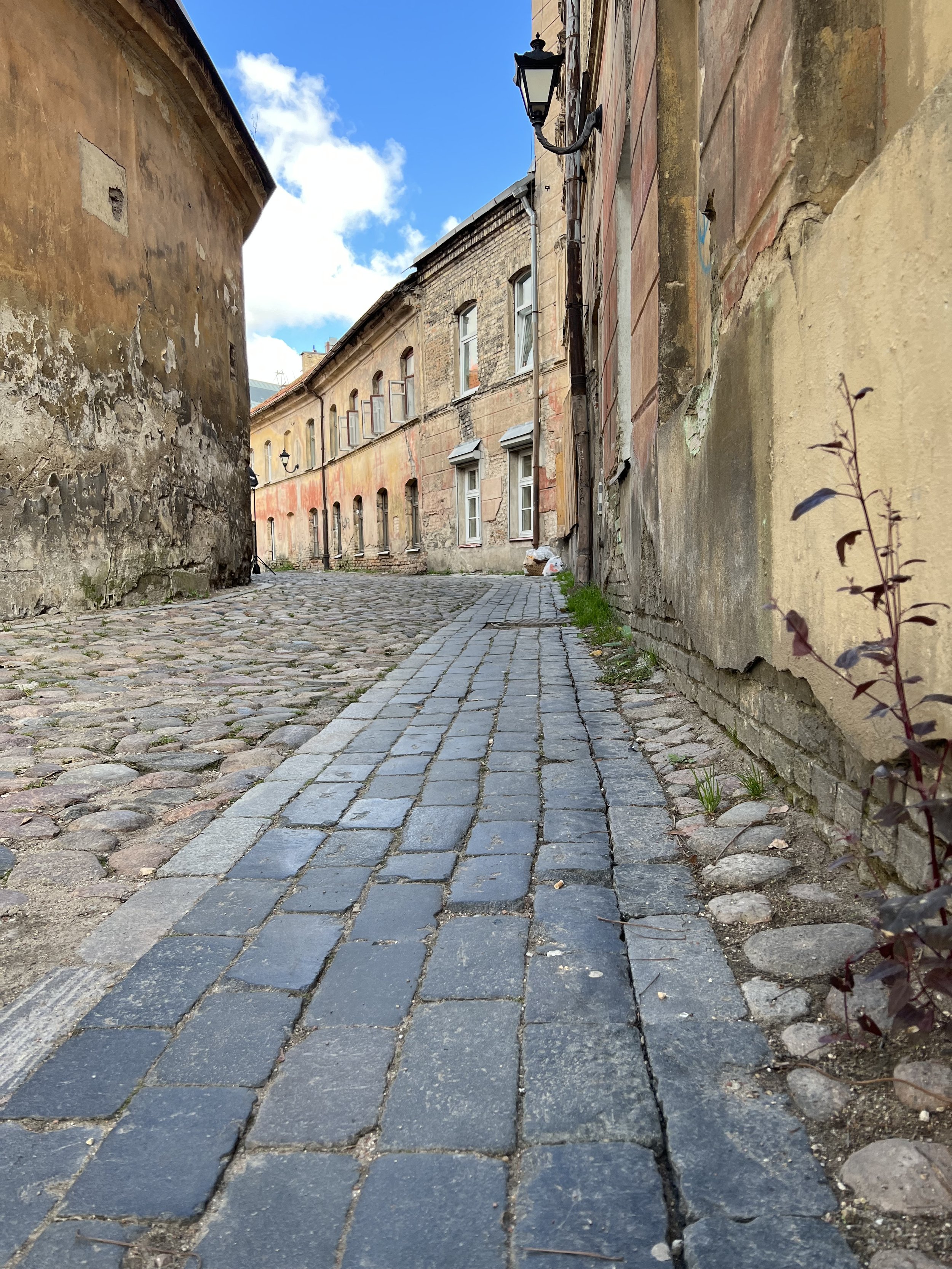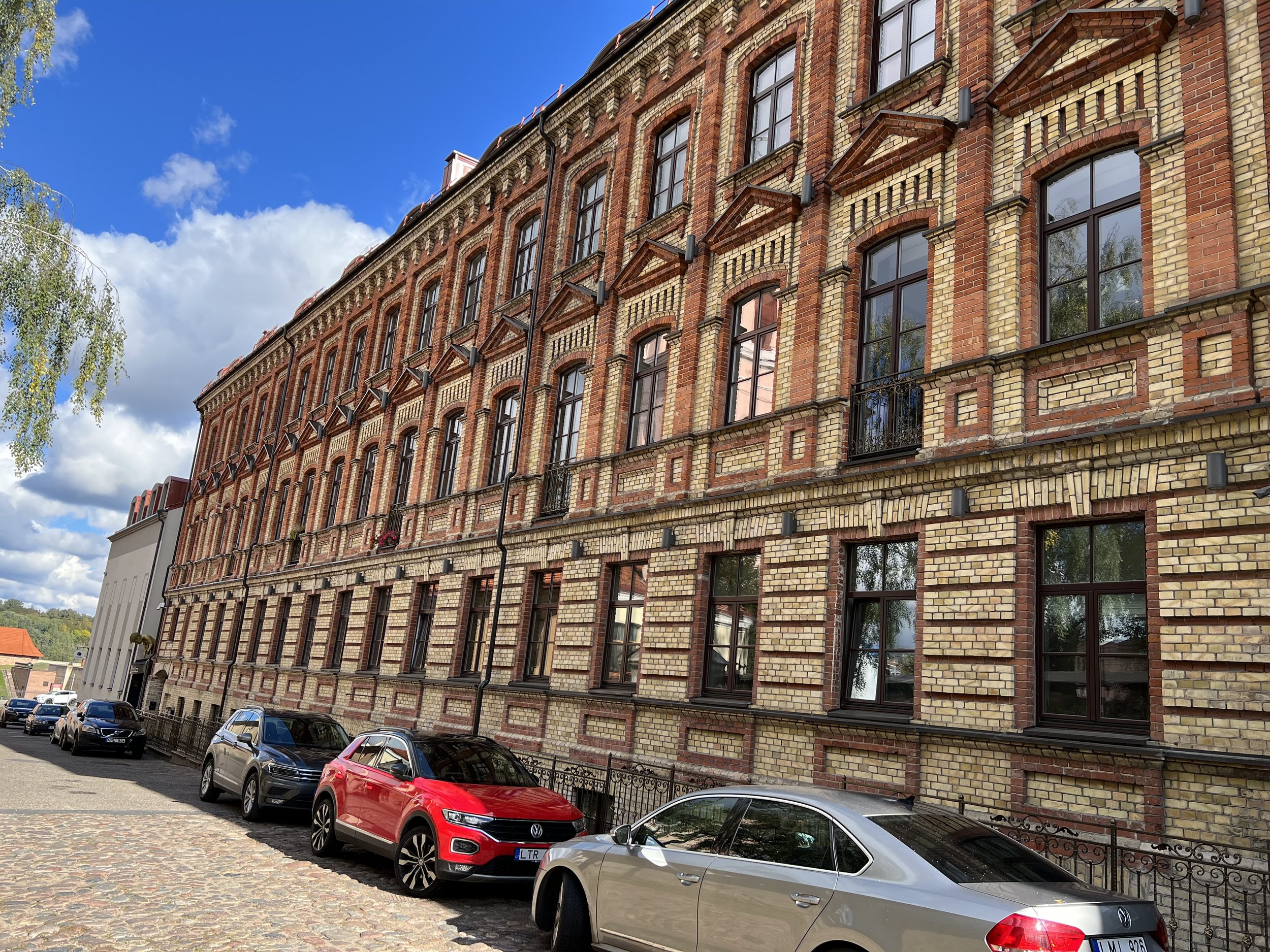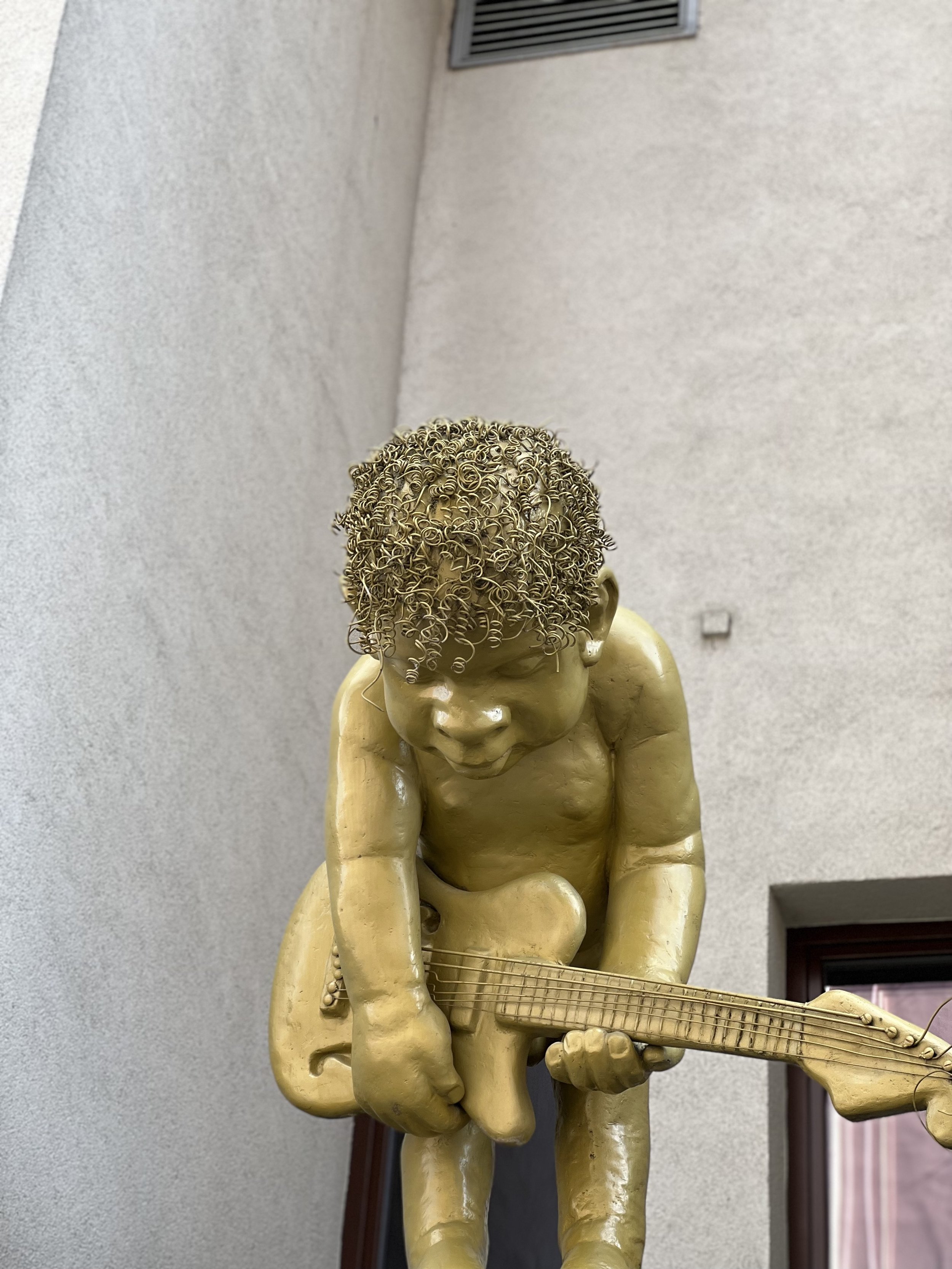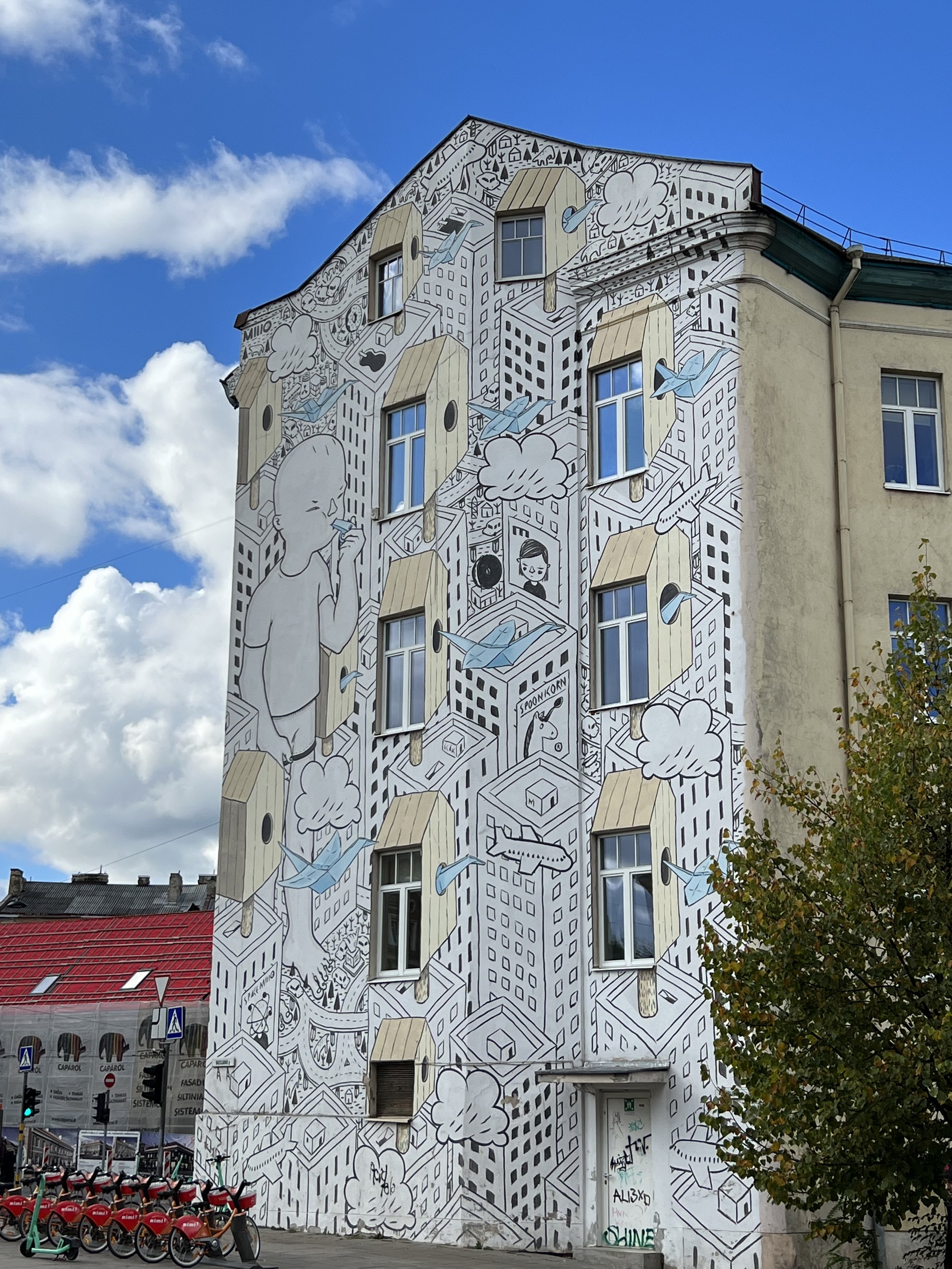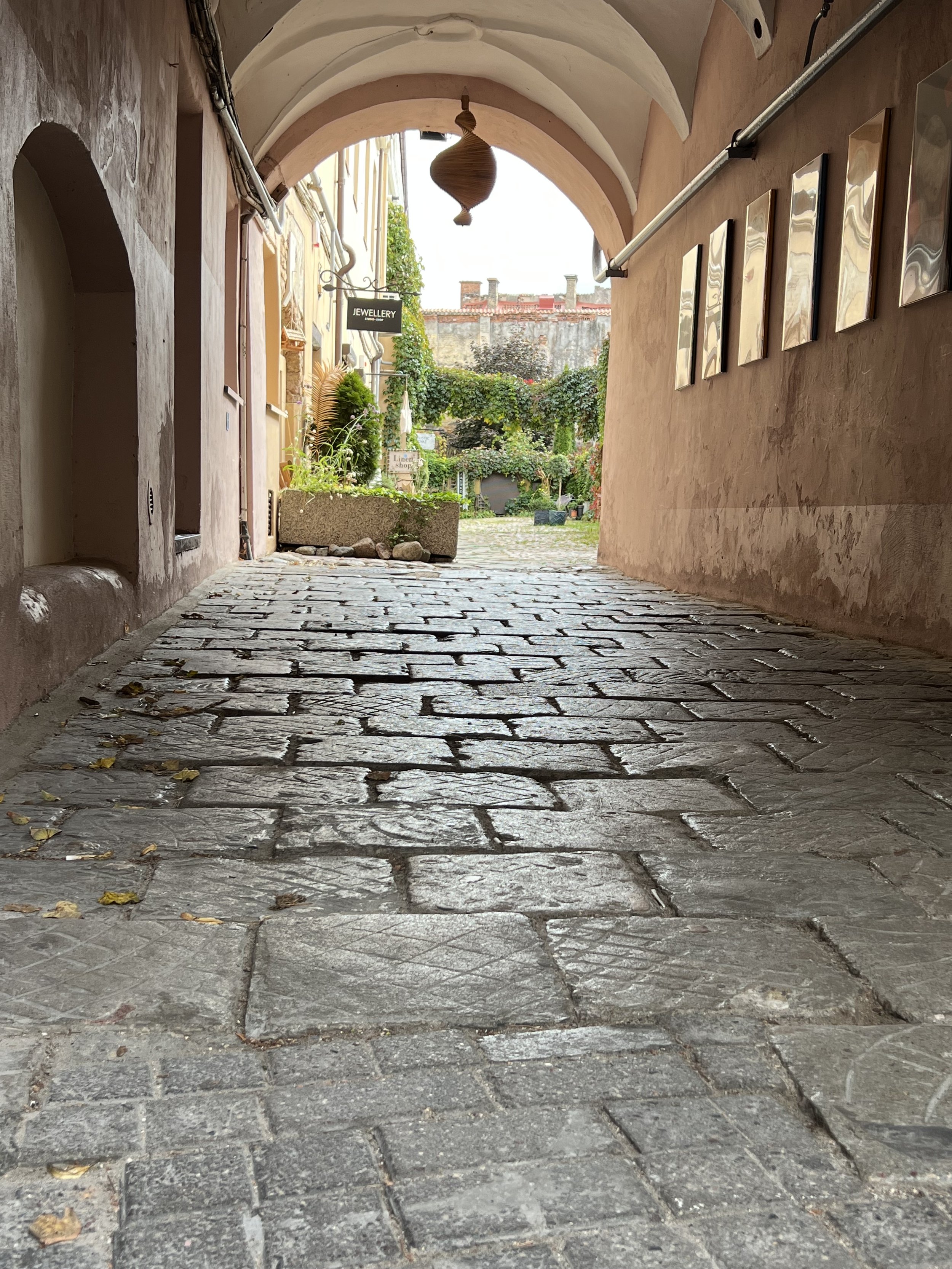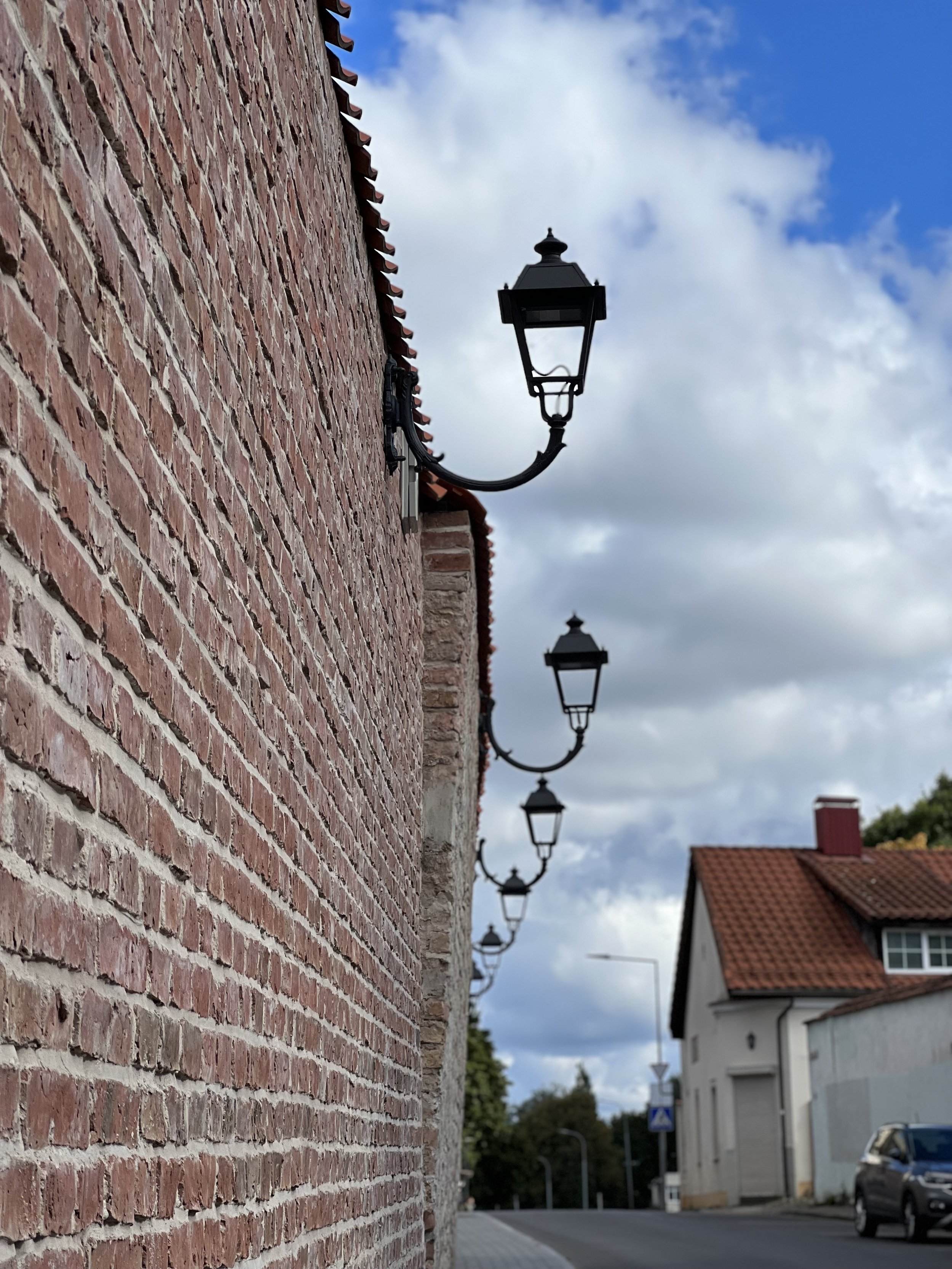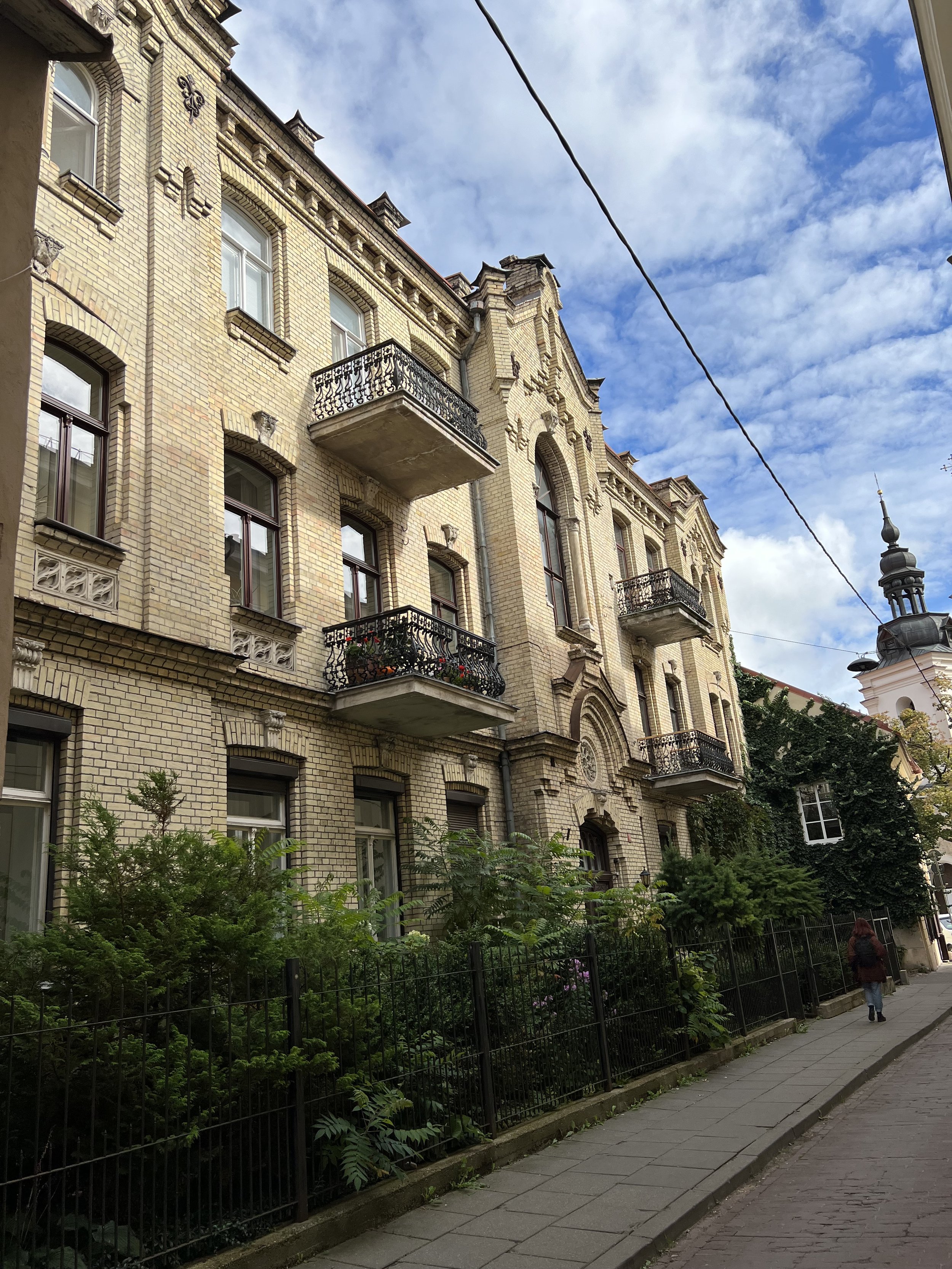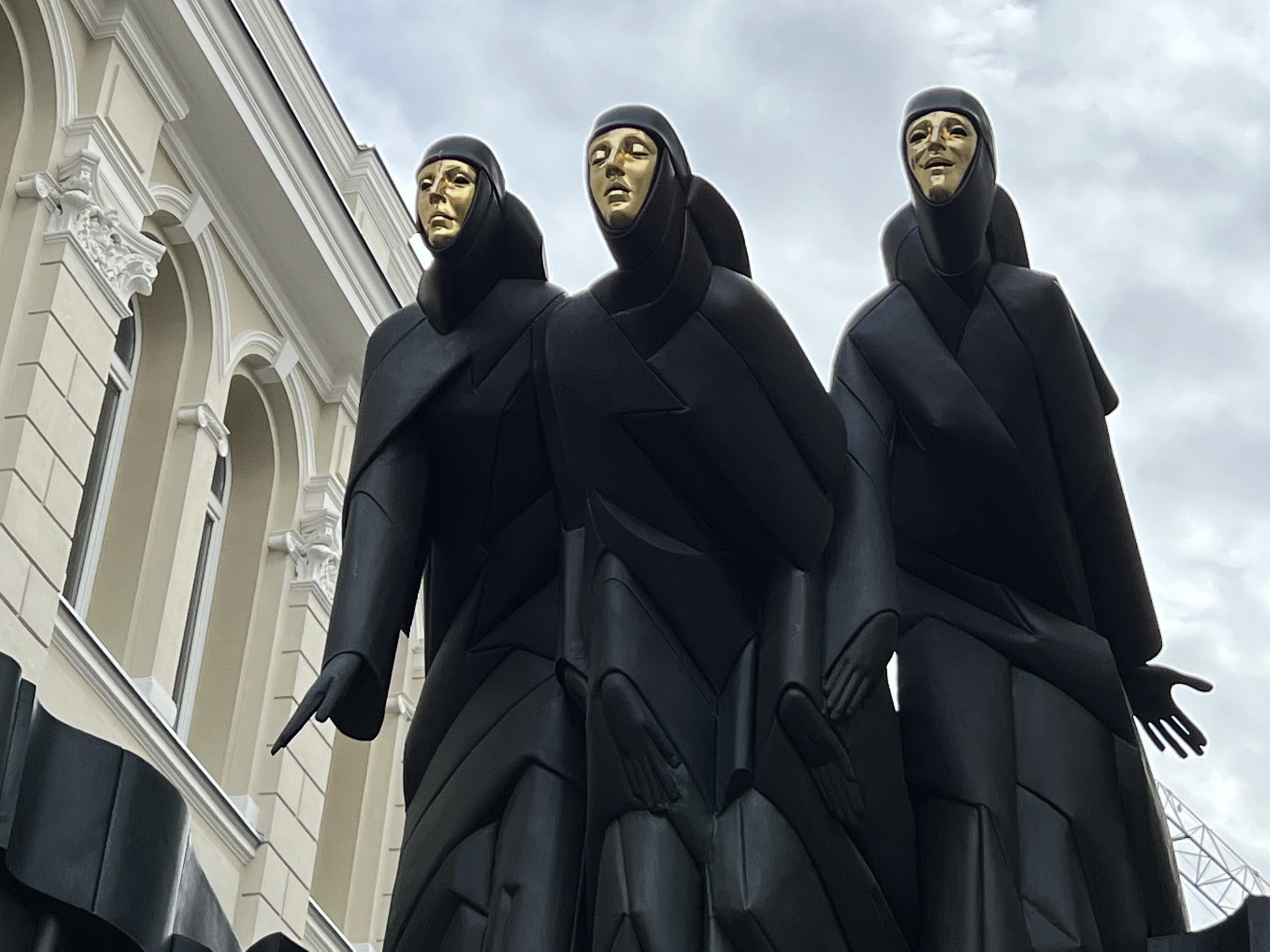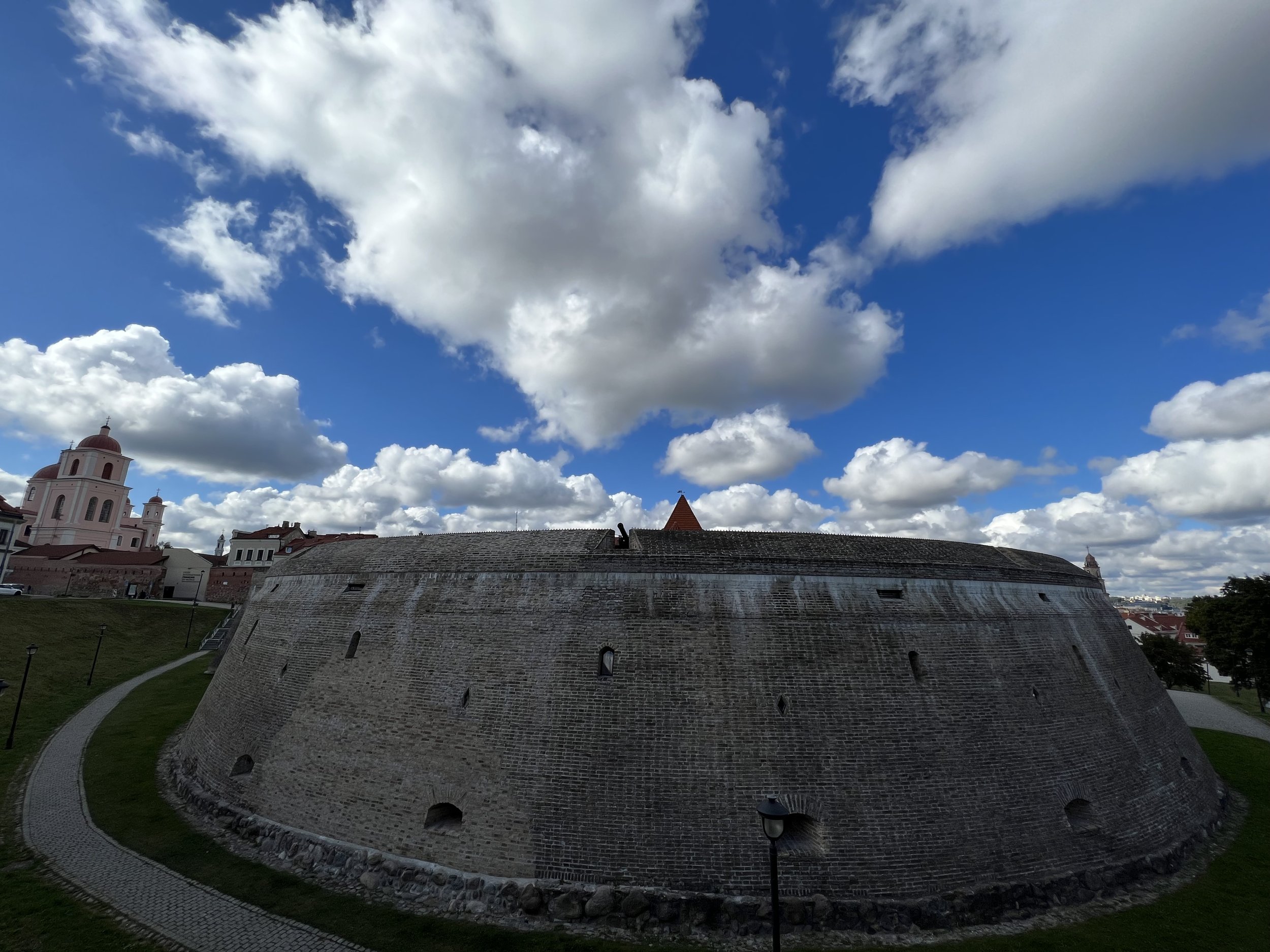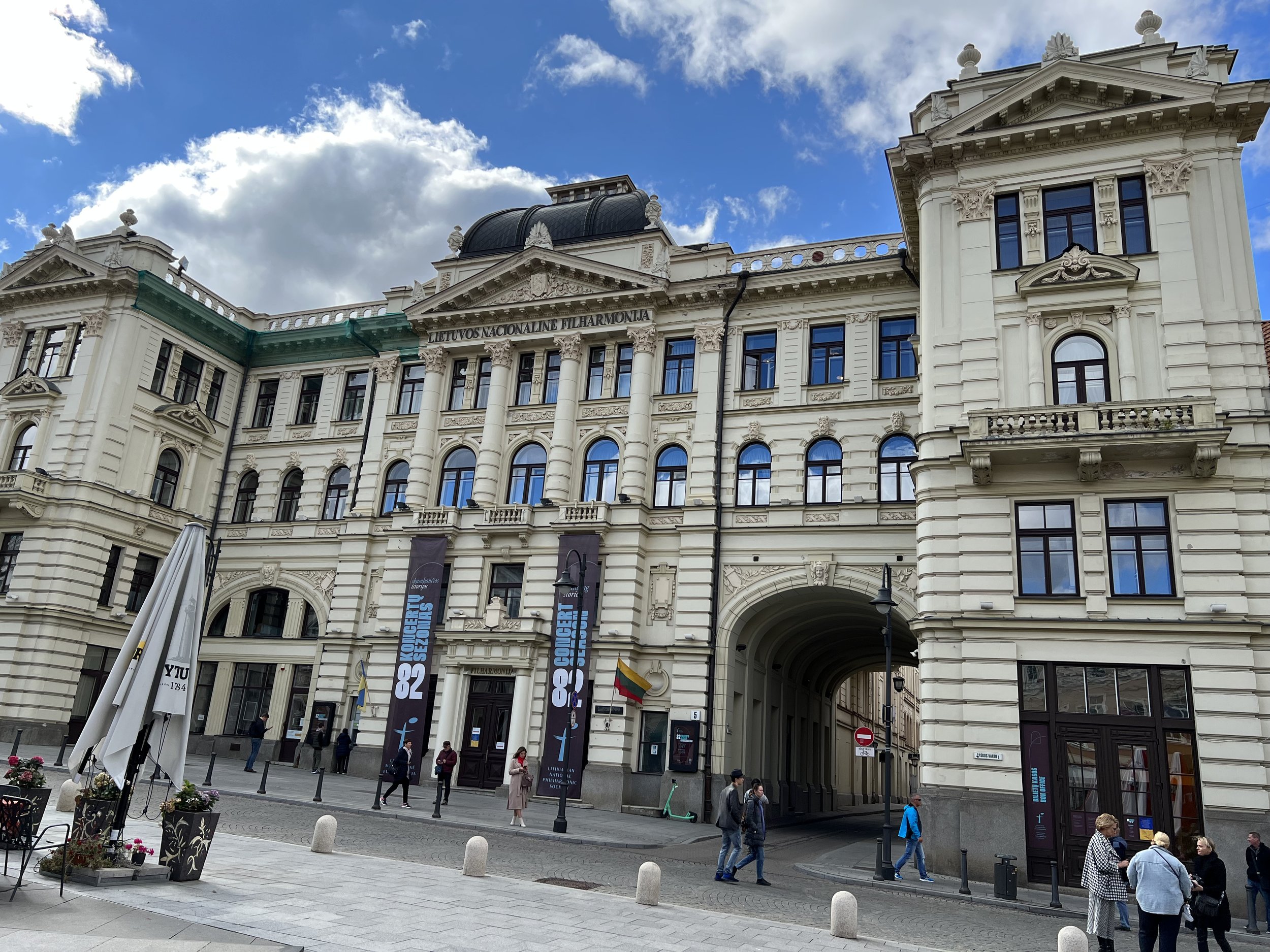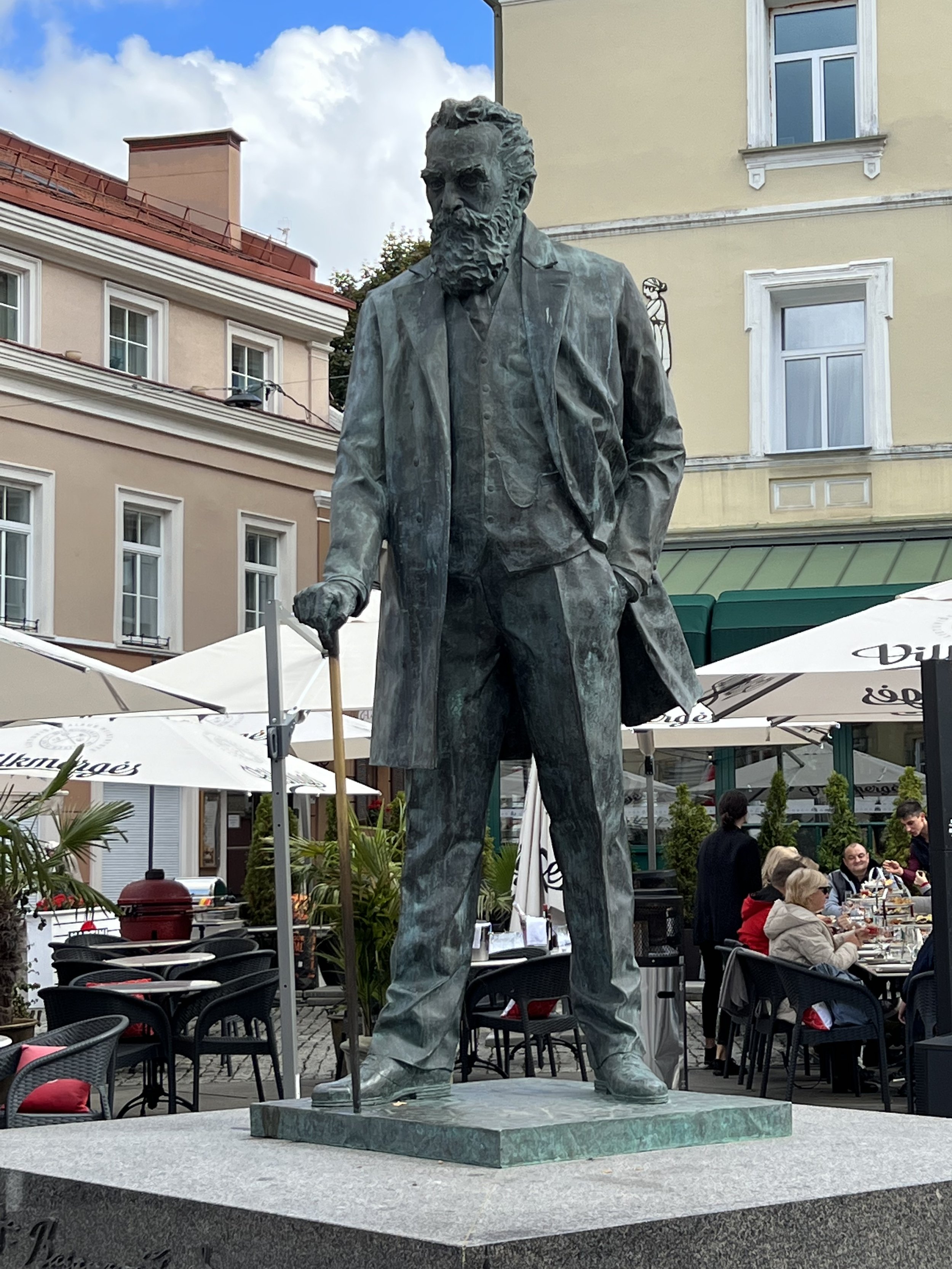Exploring Vilnius, Lithuania
View of Vilnius from Gediminas Tower
I never thought Lithuania would be a country I’d visit. Being a post-communist country of Eastern Europe that was also known for political unrest after the secession in 1991, my belief was that it wasn’t safe. However, in doing research before I left, I learned that this proud country and its government have spent over 25 years restoring and rebuilding Vilnius to near-historical accuracy of how it was before Russian invasion. Even though the work is still ongoing, I’m glad I got to spend time in what is now one of my favorite Eastern European countries and we look forward to visiting again in the future.
The below information is a complete guide of the best places to stay, the top rated places to dine and drink, and all there is to see and do. We’ve also included transportation tips, as well as a summary of the history of this hidden gem of a city!
Time needed in this city: 3-4 nights (more if you are doing day trips)
Where to Stay
Courtyard by Marriott Vilnius City Center
I wouldn’t usually recommend a Courtyard property but this one is new, clean, and comfortable. We had a great view of the Gediminas Tower from our room and everything was within walking distance (we didn’t need to grab a ride share once). Make sure to stop in the restaurant during dinner for their meringues - we still talk about them!
other recommendations
War-torn abandoned apartments in Old Town that will most likely be torn down.
where to dine & drink
One of the toughest things about Lithuania for me was the eating. They cater very well to vegans and vegetarians but definitely not to those who need to be gluten-free. Below is a list of places we dined or those recommended to us.
Amandus
We had reservations at this Užupis-based Michelin-rated restaurant but canceled them due to their inability to accommodate my allergy. If you’re up for a beautiful tasting menu created by Lithuania’s best chef, then this place is for you!
Augustus Ir Barbora Love Story Café
We’ve heard it’s one of the most Instagrammable (it looks like a posh garden inside) and delicious cafes in Vilnius.
GaBi
In the heart of old Town are a series of charming little restaurants and cafes, including GaBi - a generationally-owned Lithuanian restaurant that you will find down a beautiful courtyard off of Pilies Street. Click on the link to learn about this amazing restaurant’s history and make sure to order the Zeppelins and a wine!
Gaspar’s
Rated one of the best restaurants in Vilnius, they do have gluten-free options.
Huracán Coffee
A modern coffee shop with fantastic espressos.
Nineteen18
Rumor has it they are on their way to earning a Michelin star. Ingredients are plucked straight from the restaurant’s farm, or foraged nearby, while surplus are preserved using ancient techniques such as pickling and fermenting. Pretty plates include the standout lamb belly with pickled elderflower and cucumber, as well as moss ice cream with bird cherry syrup and herb tuile.
Senatorių Pasažas
This is a beautiful Scandinavian courtyard filled with specialty food shops and outdoor cafe tables. You can order wine from the wine bar in one store, burgers and fries from another, and a baked treat or chocolate from another. We went there a couple of times to try different things.
Shakespeare’s Restaurant and Bar
Serves global fare and traditional Lithuanian food in a quaint but elegant setting.
Telegrafas
In a fine-dining setting, dine on modern Lithuanian cuisine, including their signature dish of dumplings with venison and foraged mushrooms.
The Town Steakhouse
Located near the Gediminas Tower.
Užupis Picerija
Rated as one of the best pizza places, Užupis Picerija didn’t disappoint my other half. For me and Celiac, I had to watch him eat, as they do not cater to gluten-free people at all.
Things to See & Do
Day Trips
Kaunas
Half hour by train, Kaunas is the second largest city in Lithuania with its own castle. There are also some unique attractions to explore like Fort IX, the world’s only Devil Museum, and neighborhoods covered in street art.
Riga
Visit the mysterious Siauliai Hill of Crosses and Rundale Palace on a full-day, private tour from Vilnius to sites in both Lithuania and Latvia. Choosing a private tour gives you the flexibility to see each destination at your own pace without being limited by a group schedule; take your time to walk, take photos, and explore before returning to the city.
Trakai Castle
Trakia Castle is on an island in Lake Galve, located in Trakai. The construction of the stone castle began in the 14th century by Kęstutis, with the major works completed by his son, Vytautas the Great, in 1409 (he died in the castle in 1430). The castle was rebuilt in the 1950s–1960s by Lithuanian initiative, although it had received resistance from Soviet authorities. The Trakai History Museum was established after the reconstruction.
Historical Tours
Gate of Dawn (Our Lady of the Gate of Dawn)
Built between 1503 and 1522 as a part of defensive fortifications for the city. Out of the 10 gates built, this is the only one that survived and they believe it’s because it contains an icon of The Blessed Virgin Mary, Mother of Mercy, said to have miraculous powers. It’s part of the religious pilgrimage tour.
Gediminas Castle Tower
Gediminas Castle Tower was first built in 1409 by Gediminas, Grand Duke of Lithuania. It has changed purposes since then, including being used as the city’s first telegraph building in 1838. The Lithuanian flag was first flown at the top of the tower a century ago. There are two ways to get to the top - either a steep cobblestone pathway or by funicular - the latter of which we took. From the top, you can see the entirety of Vilnius, the Republic of Užupis, as well as the Three Crosses.
Halés Turgis
Originally set up as a horse market in the 15th century, it then became a grain market in the 16th. In 1906, it became an official food market.
KGB Museum
I’ll be honest - I didn’t even want to include this in my post because touring the jail at the bottom of the museum (what was the KGB’s offices) was one of the most terrifying experiences I’ve had, The first floor is full of memorabilia that tells the story of the wars Lithuania was embroiled in, and some of the offices were in-tact behind plexiglass as well. I would have left a little uncomfortable had I stopped there. Instead, we went down to the basement to see the jail. You start with the solitary confinement room that is no bigger than a small coat closet and when you turn right, you see the first hallway of rooms painted in brown and white with green doors - jail cells, offices, the torture room (including a black straight jacket that has been mounted on a board with the arms stretched wide), and a photograph room. Each of these rooms is semi-dark and just feels evil, with the torture room definitely the worst of them all. After some convincing from my other half, we went down a very dark hallway and out to the outdoor exercise areas. I started to feel better until I realized we had to go back through all of this again. When we got back inside, I felt nauseous and terrified as though I was going to be trapped inside for good - something I’m sure those that were jailed there, felt as well. By the time we were through the exit, I was silent during our walk to dinner and exhausted by the time we got back to the hotel. If you’re susceptible to feeling these kinds of things, skip it.
Palace of the Grand Dukes of Lithuania
Built in the 15th century, the palace saw 4 centuries of political events before it was demolished in 1801. Work on the new palace started in 2002, on the site of the original building, and it took 16 years to complete it in 2018.
Seeing Remnants of the Soviet Past
With this history above, it was absolutely incredible to see how the city has transformed, much of which you will see in this post. But, what I want to start with are the abandoned buildings the Soviets built that the Lithuanians will never restore - some of which will be demolished, others of which will remain as a reminder of the communist rule this country fought hard to free themselves from.
Vilnius TV Tower
Take an elevator to the top, learn about what happened in March of 1991, and definitely dine there.
Vilnius University
If you read the history summary at the end of this post, then you will know of Vilnius University’s history. It wasn’t until 1990 that it remained open. It’s a public university and is highly encouraged to explore, especially the library.
religious tours
There’s something wondrous about entering an historic church for the first time and in Vilnius, you can spend an entire day having that feeling. In fact, there are 28 churches in Old Town, 21 of which are Catholic and 8 of them Russian Orthodox. Below are the ones we were able to visit.
Church of the Ascension of Missionaries
Beginning in 1639, The Church of the Ascension of Missionaries took 35 years to build due to drained finances, invasions, and the plague. In the 19th century it was shut down and used for storage until the early 2000s. It is now undergoing restoration, which you can see in the photos below.
Church of St. Catherine
Built in 1625-1743, St. Catherine’s was one of many churches its inhabitants came to worship on Sundays however, during WWII, the church was badly damaged and many works of art were stolen. In 1994, restoration began and in 2006, it reopened its doors, though now it is used for concerts and events.
Church of St. Francis of Assisi and St. Bernard
First a wooden church and then a brick one in the 16th century, the church, like many others, experienced damage from WWII, as well as its Franciscan monks massacred. In 1994, it was turned back over to the monks, was restored, and is once again open for services.
Church of St. John’s
The original church was built from 1388–1426, but as with many churches, it was rebuilt and restored a few times, finally reopening for good in 1994.
Church of St. Peter and St. Paul
While the original foundation was built sometime during the 14th century, the earliest recorded version was opened in 1507. As with many of the other churches, this was destroyed and rebuilt a few times, finally remaining open in 1987.
Church of St. Theresa
The Church of St. Teresa was built by the Barefoot Carmelites in 1633–1654. In 1812, French soldiers destroyed the interior and though it was rebuilt after the war, the monastery shut down in 1844. In 1976, the church reopened, fully restored.
Hill of the Three Crosses
In 1916, a concrete monument was designed by Polish–Lithuanian architect and sculptor Antoni Wiwulski or Antanas Vivulskis in Lithuanian. It was torn down in 1950 by order of the Soviet authorities. A new monument designed by Henrikas Šilgalis was erected in its place in 1989.
Holy Spirit Orthodox Church
Off of Lukiškės Square, is The Church of the Holy Spirit (a mid-18th century church) - the major Orthodox church in Lithuania, which is affiliated with two Orthodox monasteries: The Monastery of the Holy Spirit and the Convent of Saint Mary Magdalen. These are the only remaining Orthodox monasteries in Lithuania. While we were not permitted to take pictures inside (though we snuck one as you see below), due to the crypt of Saints Anthony, John, and Eustathios being on display in the middle of the altar, we did get to take in the absolute beauty of the interior. It’s worth the visit!
Orthodox Cathedral of the Theotokos
The cathedral was built during the reign of the Grand Duke of Lithuania Algirdas for his Orthodox second wife Uliana of Tver, in 1346. After a series of fires and other means of destruction, it was turned over to Vilnius University in 1822 for modernization and restoration, though required more work after WWII. It is now used for Russian Orthodox services.
Orthodox Church of St. Nicholas
Built in 1340, this is one of the oldest eastern European orthodox churches however, over the next 500 years, it would be destroyed and rebuilt multiple times. In 1866, it was reconsecrated (after being passed to and from a couple of religions) though was shut down during WWII and not reopened again until 1956 when the renovations were completed.
St. Anne’s Church
Right next door to The Church of St. Francis and St. Bernard is the 500 year-old St. Anne’s Church - named for Anna, the Grand Duchess of Lithuania. It is said that Napoleon fell in love with it and wished he could bring it home with him.
Vilnius Cathedral and Cathedral Square
Saving the best for last is the Vilnius Cathedral and Cathedral Square. It is the main Catholic church there and many famous Lithuanians and Polish are buried in these crypts. There are also more than 40 works of art dating from the 16th through 19th centuries. What’s fascinating is that during its restoration, the altars of a presumed pagan temple, the original floor laid during the reign of King Mindaugas, the remains of the cathedral built in 1387, and a fresco dating from the end of the 14th century, the oldest known fresco in Lithuania (in one of the basement chapels), were all uncovered. During the Soviet regime, the cathedral was converted into a warehouse until 1988 when masses were celebrated again.
The Arts & Sciences
Europos Park
Opened in 1991, it’s 55 hectares of outdoor art installations by over 90 international artists,
Literatų Street (Literary Street)
A short narrow street, mostly known for public display of decorative and artistic plaques, dedicated to writers who have lived and worked in Vilnius or otherwise, have shared a connection with Vilnius and Lithuania. Its name originates from the many printing houses and bookstores which were located in the street or from the fact that prominent poet Adam Mickiewicz briefly lived there in 1823.
Lithuanian Opera and Ballet Theatre
It’s the largest theatre in the country and opened in 1979.
National Museum of Lithuania
With its origins starting from 1855, the museum has naturally seen a lot of change and expansion. In 1952, the museum was established where it is today, becoming a national museum in 1994.
Vilnil Museum of Illusions
Talk about a super fun way to spend an afternoon! This museum was on our list but we ran out of time. It’s a wondrous place where illusions meet scientific inventions and arts: physics and optics are displayed together with mysterious artworks and classical riddles.
Unique Experiences
Stebuklas “The Miracle Tile”
According to legend, this “magical’ tile tucked away in Cathedral Square can grant wishes and make your dreams come true.
The Hill of Crosses
There is said to be over 250,000 crosses that people have left there from around the world. It’s seen as the hill of light and hope.
walking tours
Ausros Vartu Street
While we did spend a brief time there wandering in and out of churches, we didn’t get to sit in an outdoor cafe and really enjoy it.
Bernardinu Street
A nondescript street full of Baroque and Classical houses, surrounded by curving walls, ancient façades, and typical 17th and 18th-century courtyards. It’s the main street that takes you to St. Francis and St. Bernard Church, as well St. Anne’s Church.
Neris Regional Park
On the way to the Republic of Uzupis
Neris Regional Park was created in 1992 to give their inhabitants a peaceful respite among all of the energetic “happenings” the city endured until that time. Since the area has been populated for more than 10,000 years, there are many stories and secrets hidden within, including 30 natural and cultural heritage objects scattered throughout one of the largest and oldest surviving oak forests where pagans used to worship their gods. You can also find the former demarcation line between Lithuania and Poland dating back to the interwar period in the Village of Ausiutiškės.
One of the most unexpected things to see is the Republic of Užupis. Recognized as an independent nation on April 1, 1998 (complete with a constitution and their own currency), the republic is only 148 acres with about 7,000 inhabitants, 1,000 of which are artists. It’s said to be similar to Montmartre in Paris and Freetown Christiania in Copenhagen. The district contains the Bernardine Cemetery, one of the oldest cemeteries in the city, as well as many of the more slum-like houses the Jewish population lived in before the Holocaust. With the houses left abandoned, they were later occupied by mostly the homeless and prostitutes. Until 1990, it was one of the most neglected areas in the city, containing many run-down houses, many without utilities. Since then, most of it has been gentrified and is now one of the wealthiest parts of Vilnius. In fact, they now have a Michelin Star restaurant. And, the art is everywhere. It’s an incredible place to wander. TIP: Make sure you go to their visitor’s center, right over the bridge, and get your passport stamped! (NOTE: For a guided walking tour, click here.)
In the Republic of Užupis rests Bernardine Cemetery - the second oldest but largest cemetery in Lithuania with over 15,000 grave stones.
Wandering Through OLd Town
One of our favorite things to do when we travel is just wander. The amount of hidden gems all over the place, are sometimes far better to see than going tours of specific places. In the case of Vilnius, it’s full of symbolism from bygone eras that tells a story of how they have risen from centuries of difficult times.
how to get around
airport transfers
Vilnius’ airport is very small so you will find no problem getting your bags quickly and heading out to your transportation. There are a couple of ways to get to your hotel:
Rideshares
It’s very easy to grab an Uber there.
Private transfer to/from airport
I personally hired someone to come get me from the airport as I was traveling solo. After three long flights, having to wait for someone to get me, wasn’t my top choice! To hire a private driver at very reasonable rates, click here.
getting around town
The city is extremely walkable, so use of transportation may not be necessary. If so, Uber rides are aplenty!
A History summary
1253 - Vilnius became the capital of Lithuania (and still is today) after a trading settlement, and the first Franciscan Catholic church was built.
14th century - The future King of England, Henry IV (then Henry Bolingbroke), spent all of 1390 supporting the unsuccessful siege of Vilnius by Teutonic Knights. During this time, he (sadly) bought and captured Lithuanian women and children and took them back to Königsberg for their conversion to Christianity. However, because Vilnius was the flourishing capital of the Grand Duchy of Lithuania, Gediminas expanded the Grand Duchy through warfare, along with strategic alliances and marriages, in order to win
16th century - The city went under a period of expansion, including the build of one of the country’s most important scientific universities.
1503 - 1522 - The Wall of Vilnius was built for protection, comprising nine city gates and three towers
1547 - Sigismund II Augustus moved his court from Kraków to Vilnius.
1654 - 1667 - The city saw a series of wars, know as “The Deluge”
18th century - Not only did the Bubonic Plague kill 3500 people. but there were a series of fires that ravaged the city.
1795 - Lithuania was now under Russian rule.
1812 - Napoleon took over the city on his way to Moscow.
1831 - Vilnius University was closed and all city development was halted.
1863 - A massive uprising occurred, which led to the ban of Polish and Lithuanian languages being used.
Early 20th century - Vilnius began the process of becoming an independent state.
1916 - 1918 - The German Army occupied the city during WWI. Upon departure, Lithuania was recognized as independent. It was briefly taken over again by the Soviets during The Polish War but then given to Poland to control.
1939 - Lithuania declined the invite to join the German Army in the fight against Poland, which led to Russia seizing Poland (and subsequently, Lithuania) and completely disassembling Vilnius, moving factories to Moscow and forcing people to move with it.
1940 - Lithuanians were tricked into believing they’d get their independence back if some redcoats were allowed to remain in the city to help rebuild the government.
1941 - Lithuanians called B.S. and began a Soviet uprising that ended in 20,000 - 30,000 people getting arrested and sent to far east Soviet gulags. That same year, Germans took over Vilnius and set up two ghettos for the Jewish, though 95% were murdered.
1949 - 90% of Vilnius’ population was gone, due to murder, deportation, or exile. The second half of that decade was spent rebuilding, via the Soviets. 30 years later, the population exceeded 500,000.
September 1991 - After a brief Soviet attack, Lithuania was finally recognized as an independent nation. Since that time, business buildings have been built along the Neris River and with it, over 75,000 new flats. Swedbank also put their headquarters there,
2009 - Lithuania was awarded the “European Capital of Culture” and to celebrate, they started restoring the old city center, along with historic monuments. And by the time we arrived, most of it had been completed.
